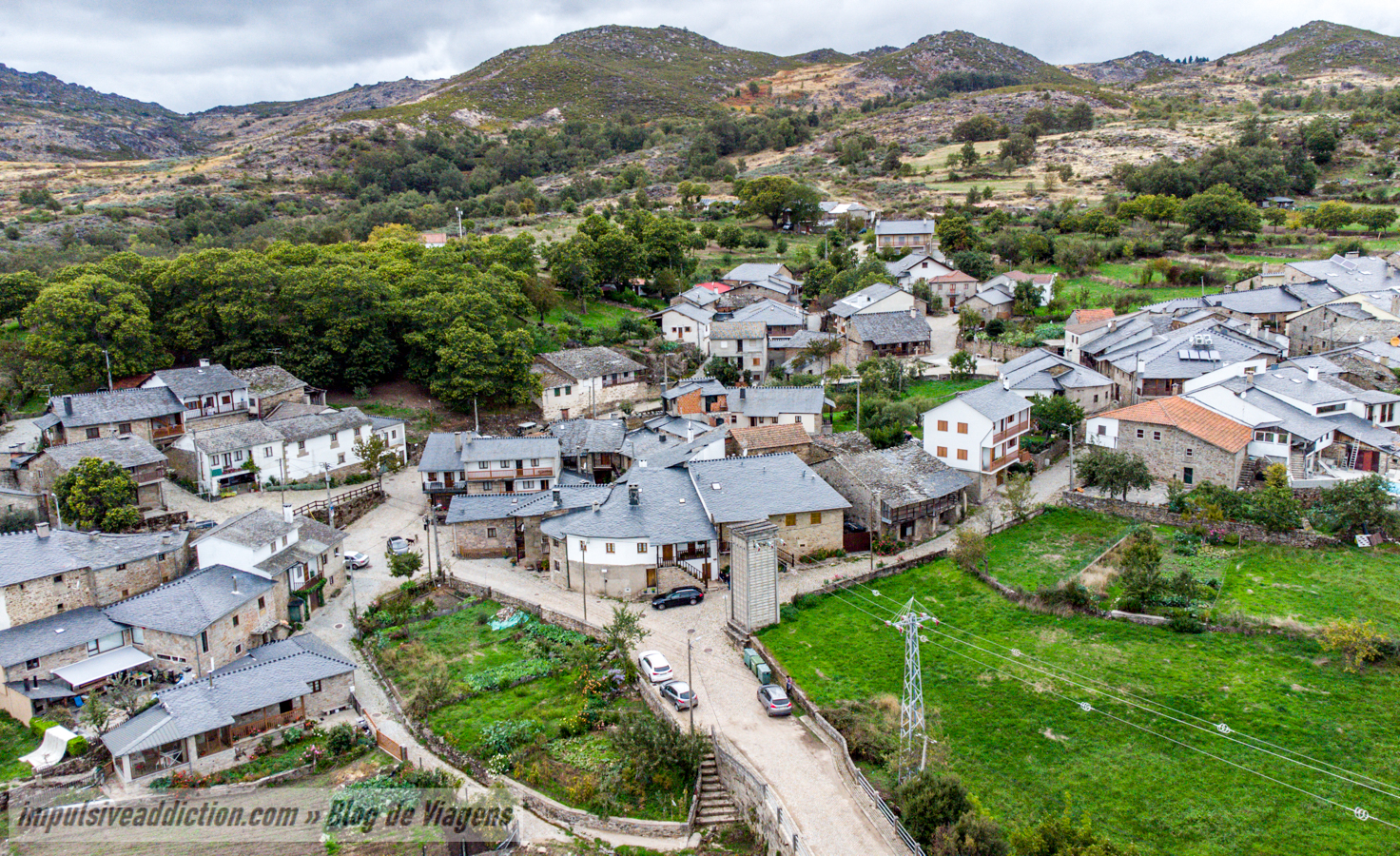I’ve visited Montesinho Natural Park twice. The first time, I confess I wasn’t impressed, perhaps because I still didn’t know how to travel and how to organize a trip properly. I think it was that, or the lack of information about this region at the time. I don’t remember much of what I saw then, only that I expected much more! That was a long time ago!
The second time, however, I finally made peace with Montesinho. I loved getting to know the historic centers of Bragança and Vinhais, and the strong traditions of this region in the north of Portugal. But what captivated me most were the small but picturesque villages lost in the mountains, the animals, the people, the landscape and, of course, the fantastic gastronomy.
Of the more than 90 villages in Montesinho Natural Park, I passed through almost 60 in total. Some of them I know I explored in detail, while others I just took a quick look at from their main roads.
I loved visiting Guadramil, Rio de Onor (one of Portugal’s wonder villages), Gimonde, Aveleda, Gondesende, Montesinho, Vilarinho, Dine, Moimenta, Pinheiro Novo, among others. I would like to highlight the possibility of going to France “without Paris”, and without leaving Portugal. 😀
I think I’ve got a good idea of what there is to do and see in Montesinho Natural Park, and now I’m here to help you plan your trip there. I think 4 days is enough, because I’m only going to tell you what’s really worth seeing, based on my own experience. Ideally, 5 days!
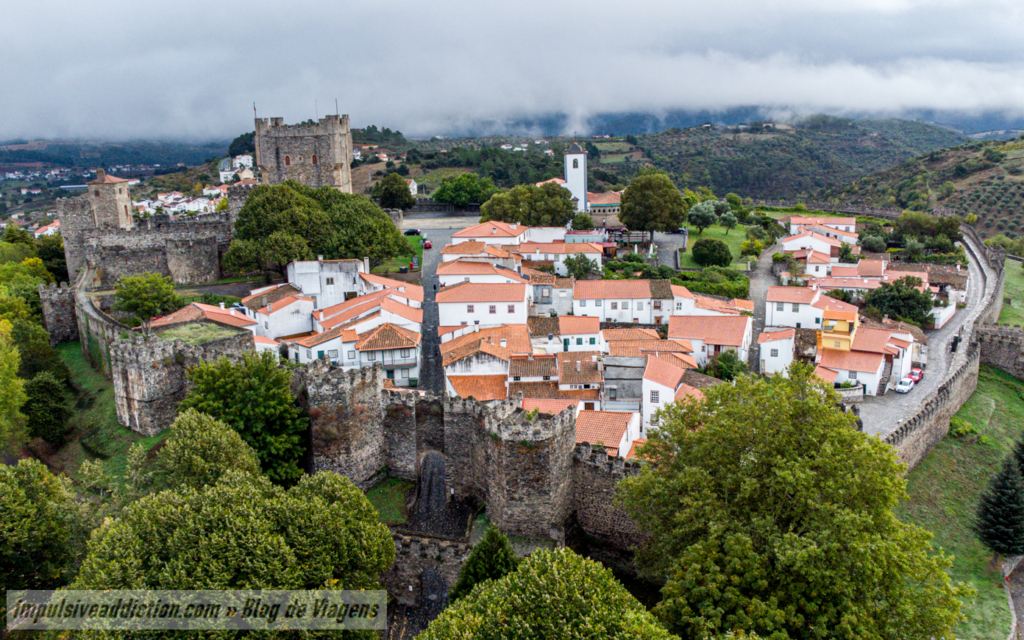
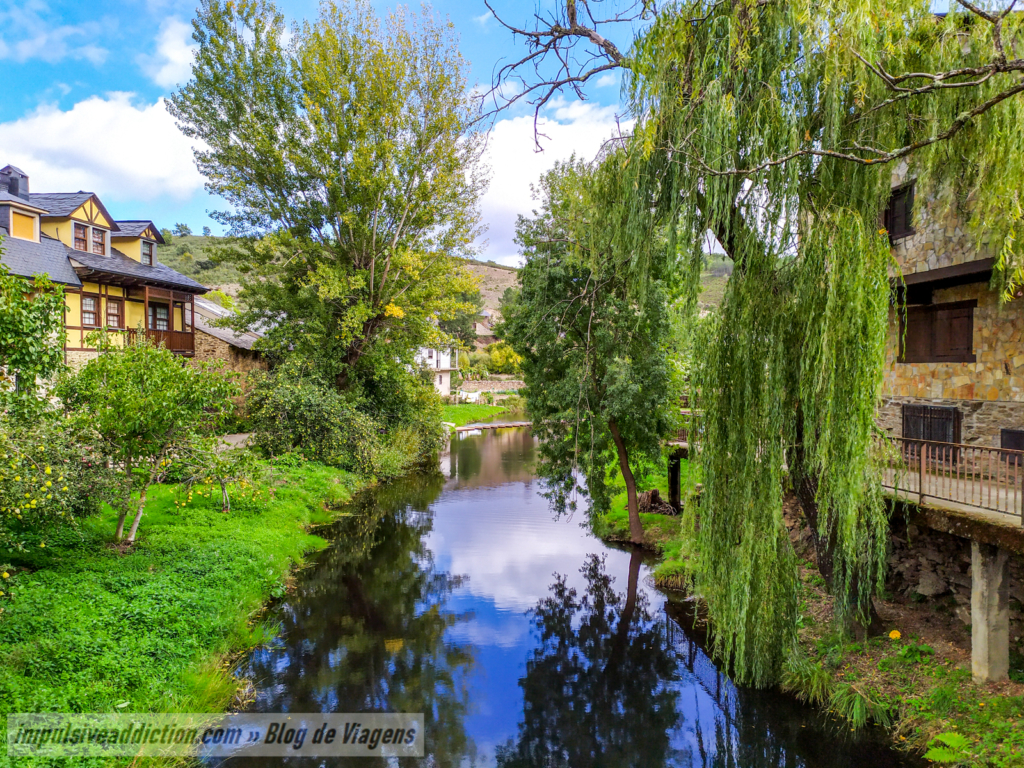
Where is Montesinho Natural Park located, in Portugal?
Montesinho Natural Park is on the northern edge of Portugal, close to the border with Spain, namely Galicia (Ourense) and Castile & León. There are many articles on this blog about things to do in Galicia, so if you’re curious, follow the link to find out more.
It is part of the district of Bragança, more precisely the municipalities of Bragança and Vinhais.
It’s not too far from Douro International, and it’s also not too far from the Sabor Lakes, so you’ll be able to travel on to other nice parts of Portugal if you wish.
MORE ARTICLES FROM THE NORTH OF PORTUGAL: - Porto Itinerary - Things to do in Porto - Best Museums in Porto - Best Churches and Cathedrals in Porto - Best Parks and Gardens in Porto - Best Port Wine Cellars in Porto - Best Beaches in Porto - Best Day Trips from Porto - Best Matosinhos Beaches - Things to do in Matosinhos - Things to do in Póvoa de Varzim - Things to do in Vila do Conde - Things to do in Vila Nova de Gaia - Things to do in Espinho - Minho | Northern Portugal Itinerary - Things to do in Viana do Castelo - Things to do in Ponte de Lima - Things to do in Monção - Things to do in Valença - Things to do in Caminha - Things to do in Braga - Things to do in Guimarães - Things to do in Barcelos - Things to do in Esposende - Things to do in Arcos de Valdevez - Peneda Gerês National Park Itinerary - Best Hikes and Trails in Peneda Gerês National Park - Best Peneda Gerês National Park Waterfalls and Lagoons - Douro Valley Itinerary - Douro Valley Wineries - Best Douro Viewpoints - Things to do in Peso da Régua - Things to do in Lamego - Things to do in Pinhão - Best beaches in Northern Portugal - Trás-os-Montes Itinerary - Things to do in Bragança - Douro International Natural Park Itinerary
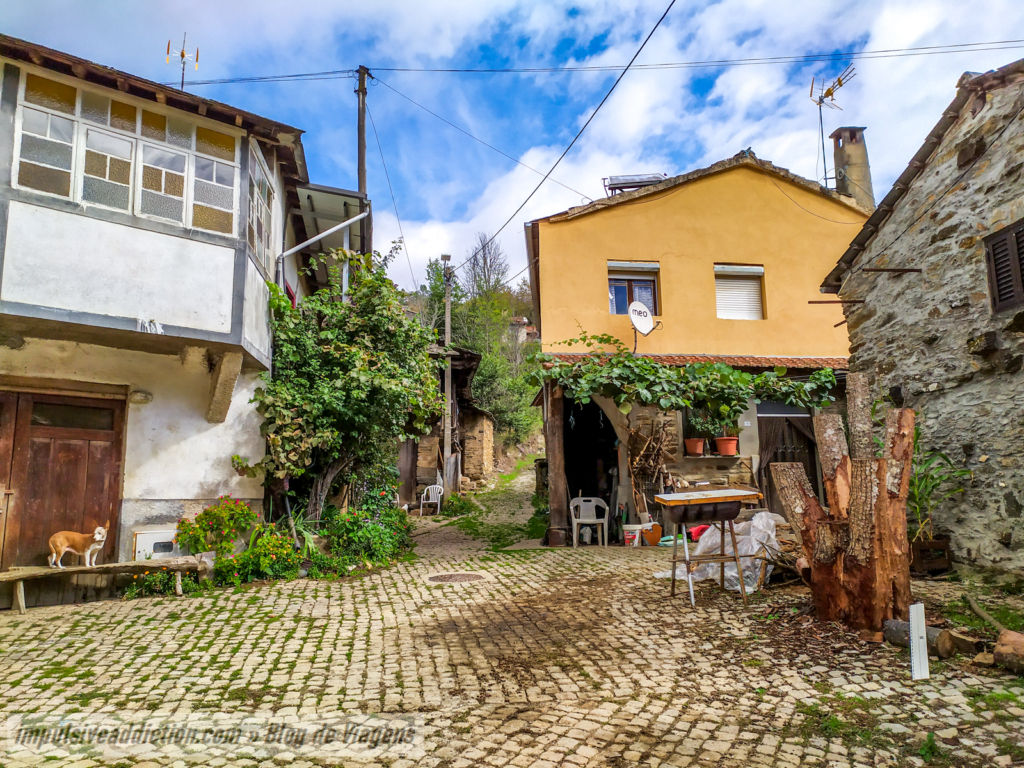
Useful tips for visiting Montesinho Natural Park
Having a car is a must for your itinerary in Montesinho Natural Park. If you don’t have a car, rent one with Discover Cars, which allows you to analyze and compare prices between different rental companies until you find the best deal.
Likewise, travel insurance should be taken out without fail. We are all subject to bad luck and travel accidents. I, for example, ended up in hospital on a past trip through Douro Valley, and it all happened because of a fall in one of the most unlikely place ever. 😐 Opt for Travel insurance with World Nomads.
When to visit Montesinho Natural Park?
The second time I visited Montesinho, I did so at the beginning of October, because I wanted to get to know the natural park during the Roe Deer mating season. The landscape was beautiful, with the warm colors of autumn becoming visible, and although I didn’t hear the roar as I had hoped, I did have the opportunity to see roe deer free in the wild, somewhere on the mountain during my road trip.
It was also chestnut and walnut season, and seeing the thousands of chestnut trees in the park, full with chestnut hedgehogs, was a beautiful experience. They definitely make a mark on the landscape!
I really enjoyed visiting Montesinho in the fall, but I know that there are other very interesting times associated with the region’s main festivities and traditions. I’ll give you a brief summary below:
- Festa dos Reis, in the weekend before January 6th (Rio de Onor) or the weekend closer to January 6th (Baçal).
- In February, Festa do Fumeiro in Vinhais. Gastronomic event related with its smoked sausages.
- The Caretos Carnival, on the Saturday before Carnival (Bragança). Better than this one is the Carnival of Caretos in Podence – Macedo de Cavaleiros.
- Ash Wednesday in Vinhais, to see “Death and the Devils”, who walk the streets of the historic center that day.
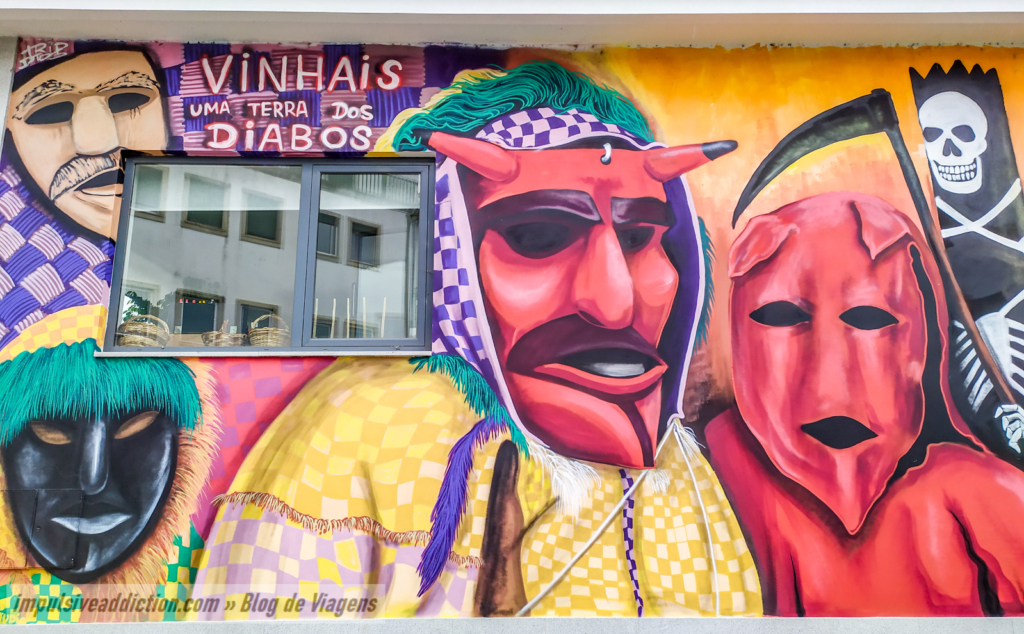
- On October 31, Festa da Cabra e do Canhoto in Cidões (Vinhais). It is said that “whoever eats from the goat and warms himself with the canhoto, will have a lucky year”.
- The Chestnut Festival “Rural Castanea”, at the beginning of November in Vinhais. After all, Vinhais is one of Portugal’s largest chestnut producers.
- On December 25 and 26, the Boys’ Festival in Ousilhão (Vinhais), or in Aveleda and Varge (Bragança).
Gastronomy and Restaurants in Montesinho Natural Park
I chose MEAT when I visited Montesinho and the municipalities of Vinhais and Bragança, and I honestly think it’s the best option. 😀 But you can also eat good river fish if you prefer. I chose wild boar, venison and veal for my meals, but I’ll leave you with a list of typical dishes below:
- Transmontana-style kid or lamb
- Stewed wild boar
- Mirandese steak
- Veal braised with chestnuts
- Vinhais Smoked Meat with Bísara Pork
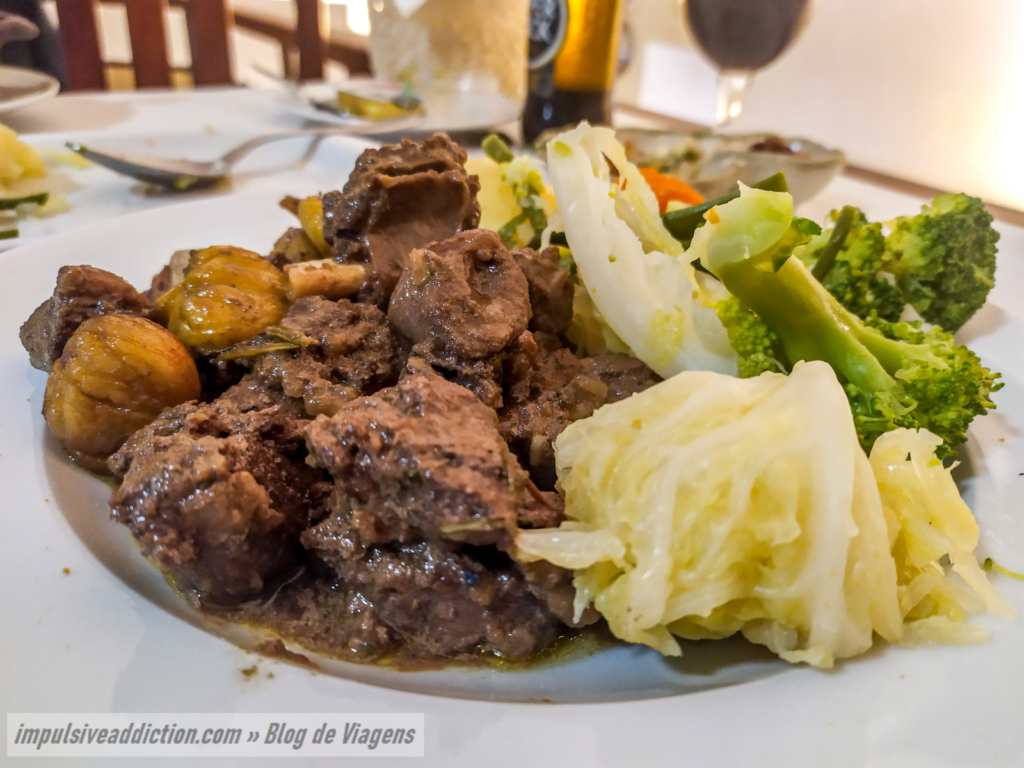
For dessert, opt for fall sweets, especially if you’re visiting Montesinho at that time. Something made from walnuts or chestnuts will taste great! At the Poças restaurant, for example, after an extraordinary Boar Stew with Chestnuts, the dessert was divine: Quince soaked in Port wine, with walnut ice cream! The appearance may have left some doubts, but the taste completely eliminated them! 5 stars! 😉
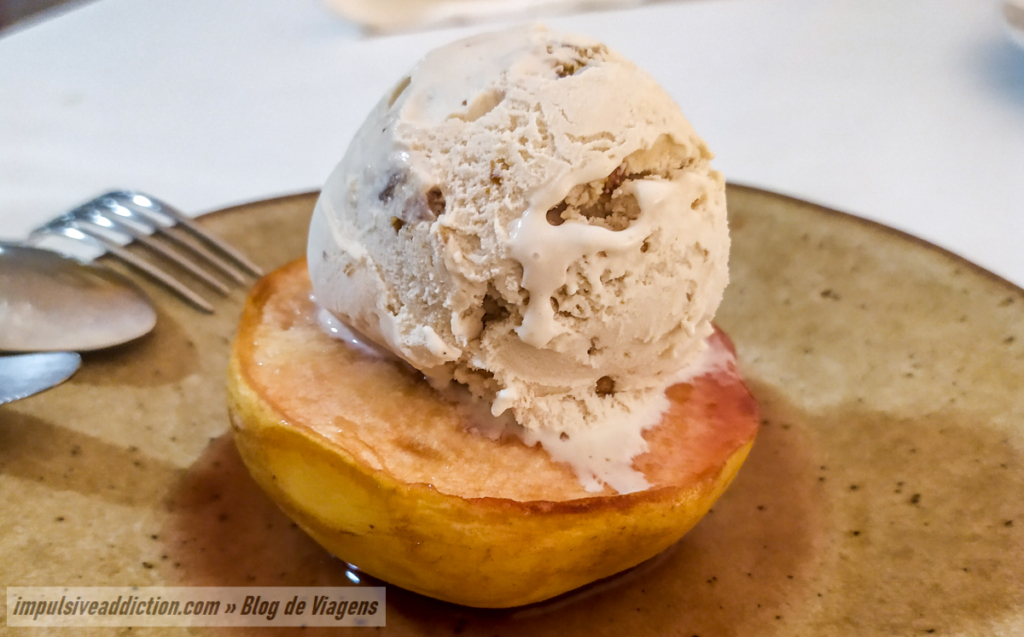
Another dessert I recommend for those dining in the city of Bragança is an XXL crepe from Dona Raquel. The tavern where she sells them is just off Cathedral Square, near another good restaurant: Emiclau. You have lots of flavors for the crepes, which makes them a real bomb! 😀 They’re amazing, and I ate two, one each day I was in town!
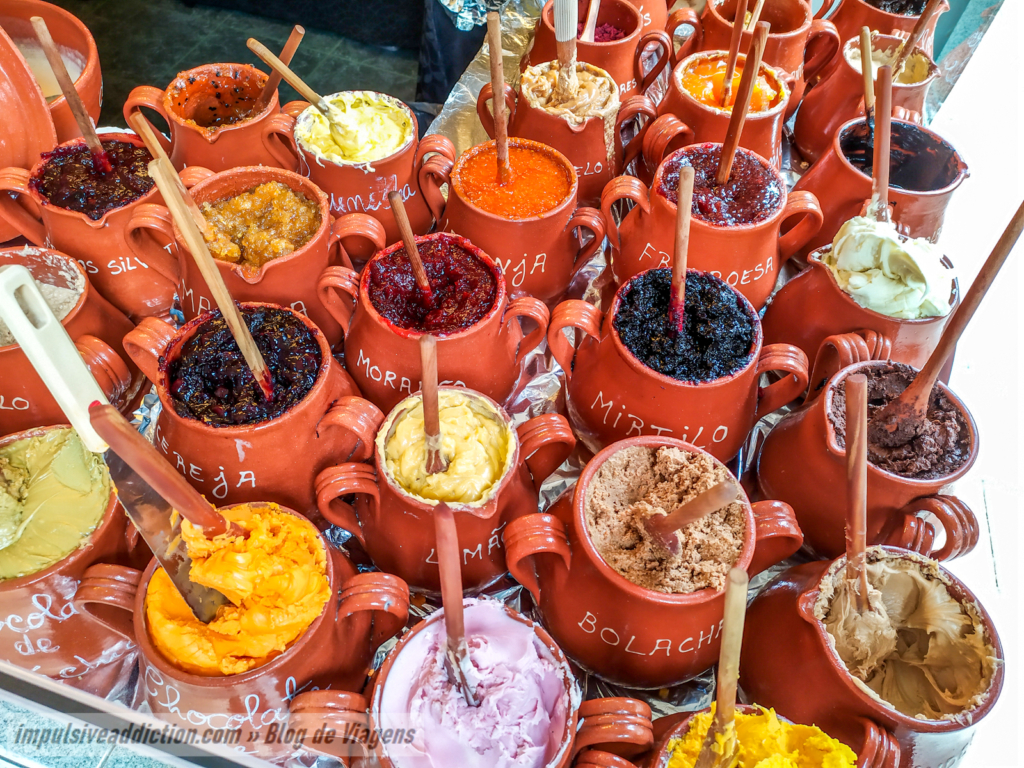
Here are some other restaurant options:
- Restaurant Vasco da Gama, where I had dinner in Vinhais.
- Restaurant O Abel, in Gimonde (Bragança)
- Solar Bragançano in Bragança (you will need to make a reservation).
- Tasca do Zé Tuga, in Bragança. Reservation is also needed.
Accommodation tips to visit Montesinho Natural Park
In Vinhais, my top recommendation is the Biological Park of Vinhais, and if your stay coincides with the deer mating season, you might be able to hear the roar early in the morning or late in the evening, directly from the animals in the park! 😉
In Bragança I stayed at the Baixa Hotel and honestly it was very good, central, with an excellent breakfast and good value for money. I totally recommend it. 😉
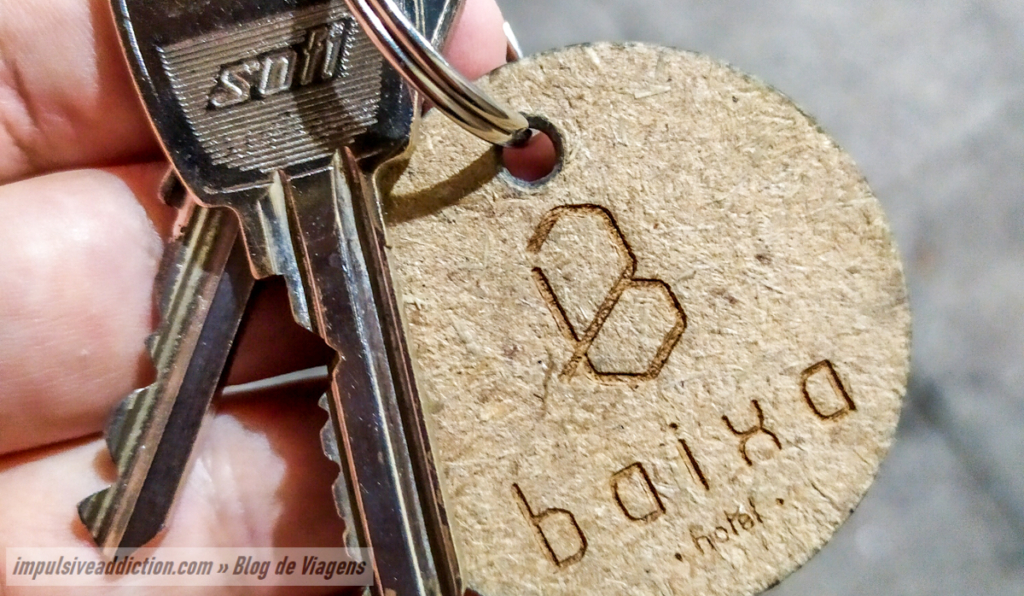
But here are some other tips:
| Accommodation | Score | Location |
|---|---|---|
| Casa da Barriada | 9.3 | Gondesende (Bragança) |
| Hotel Santa Apolónia | 8.8 | Bragança |
| Solar de Santa Maria | 9.1 | Bragança |
| Hotel Rural O Abel | 9.3 | Gimonde (Bragança) |
| Casarão dos Reis | 9.1 | Caravela (Bragança) |
| Casal de Palácios | 9.0 | Palácios (Bragança) |
| Moleiro de Baçal | 9.2 | Baçal (Bragança) |
| Candeias do Souto | 9.3 | Meixedo (Bragança) |
| A Lagosta Perdida | 9.5 | Montesinho (Bragança) |
| Apimonte – Casa da Serra | 9.7 | Vilarinho (Bragança) |
| Alformil | 9.5 | Formil (Bragança) |
Montesinho Natural Park Itinerary and things to do
And finally the itinerary for 4 days. This will be a simple and straightforward itinerary. I would definitely highlight the fact that the routes suggested in this article are built on the map below!
Map with things to do in Montesinho Natural Park
1st Stage | Montesinho Natural Park Itinerary
The first stage of the itinerary will be the town of Vinhais and the surrounding area, namely the Biological Park of Vinhais, which is extraordinary, and the Ciradelha viewpoint with the Chouriça swing. I managed to visit all these places in about 4 or 5 hours, as the center of Vinhais is very compact.
1. Historic Center of Vinhais
In the historic center of Vinhais, don’t forget the following places:
- The Interpretation Center of the Montesinho Natural Park, in Casa da Vila, where you’ll have access to part of what remains of the castle. As well as getting very useful information for exploring Montesinho, you can ask here for an excellent map of the whole region! Do that, because this map was really useful to me, and I couldn’t find it available at the Tourist Office!
- The rest of Vinhais Castle, with its North and South Gates, Pillory and Mother Church of Nossa Senhora da Assunção.
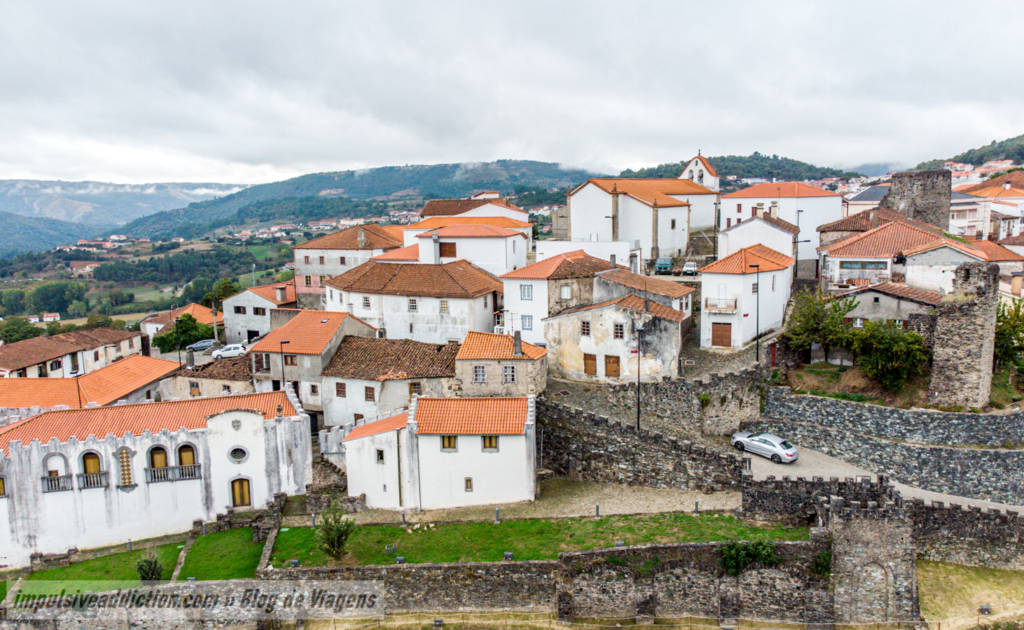
- Praça do Município and Largo do Arrabalde, the two main squares in the town of Vinhais.
- The Pig and Smoked Meat Interpretive Center.
- The Chestnut Roaster, supposedly a Guinness World Record for its size.
- The Arts and Crafts Green Park.
- The town’s main churches, namely the Church of São Facundo or the Church of São Francisco, which houses the Museum of Sacred Art (which can be visited by appointment).
- The exhibitions at the Vinhais Cultural Center.
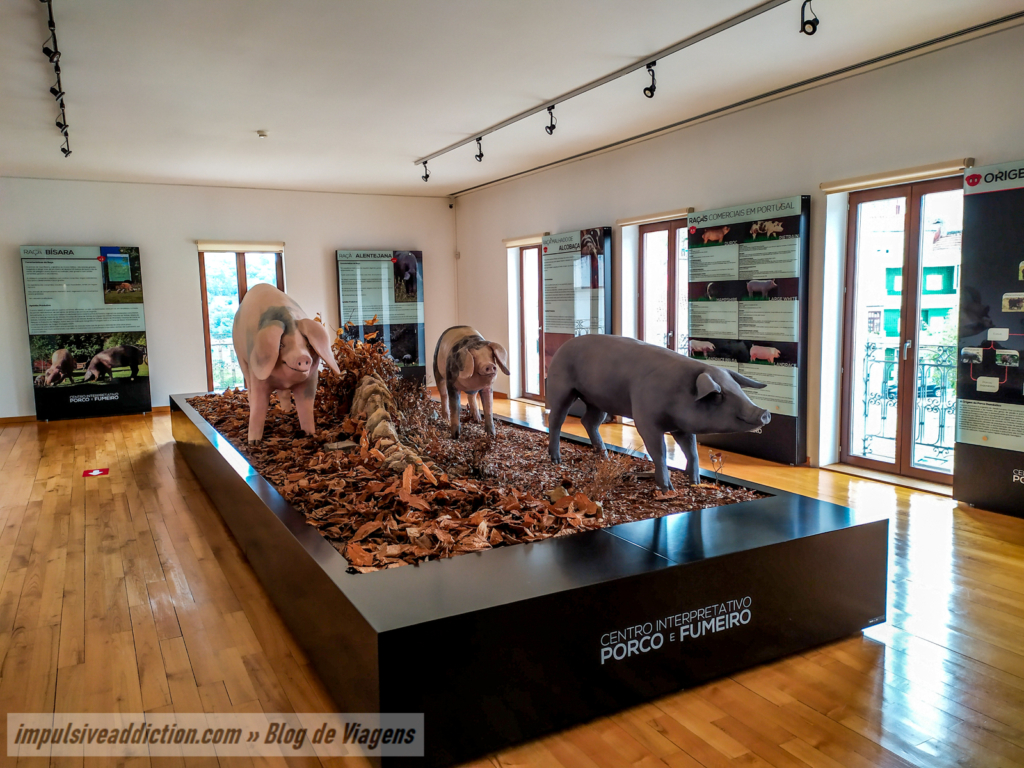
2. Biological Park of Vinhais
At the Vinhais Biological Park, on the other hand, you’ll be amazed by the impressive number of animals. Don’t forget to visit the Iberian Wolf Interpretive Center inside the park and get to know some of the breeds you’ll also find in Montesinho Natural Park: wild boar, deer, roe deer, Mirandese donkeys, foxes, churra sheep, goats, among others.
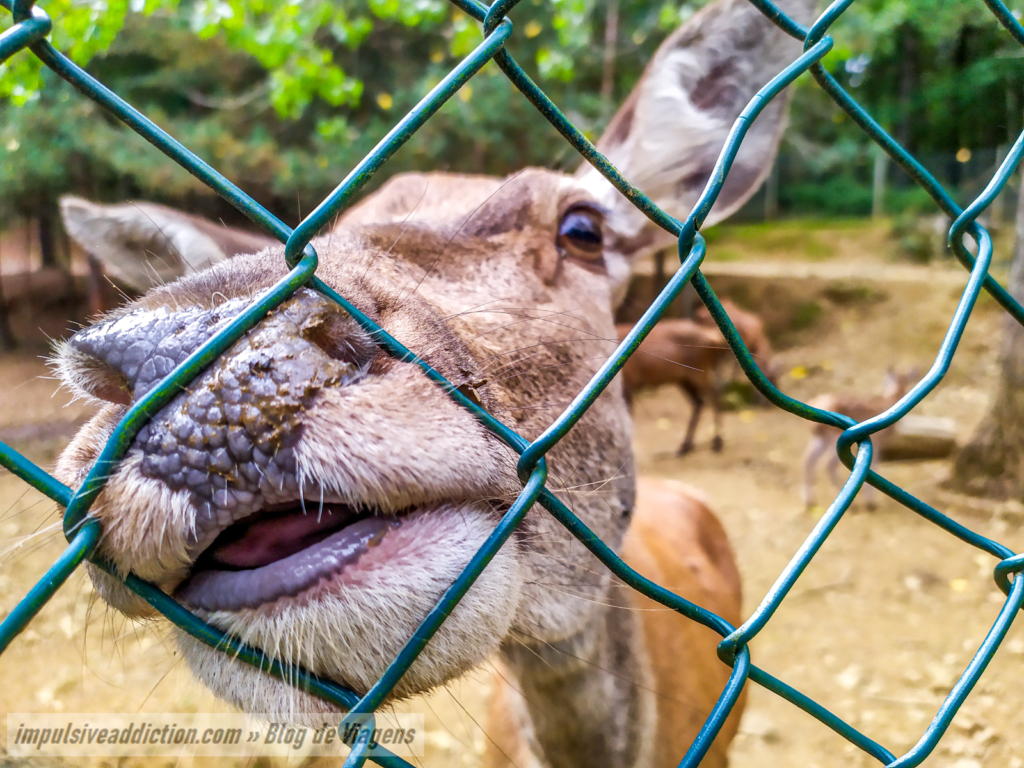
3. Ciradelha Viewpoint and Chouriça Swing
The Ciradelha viewpoint and Chouriça swing are close to Vinhais Biological Park. I found it difficult to get to the top of the Ciradelha hill by car, so I don’t recommend it. Go on foot, because the road is terrible!
However, to get to Chouriça swing, from where you have the best viewpoint of Vinhais, the road is relatively accessible by car, and there are signs along the way. There is also a trail you may choose to take from the biological park, if you prefer. See more in the section dedicated to walking routes in Montesinho Natural Park.
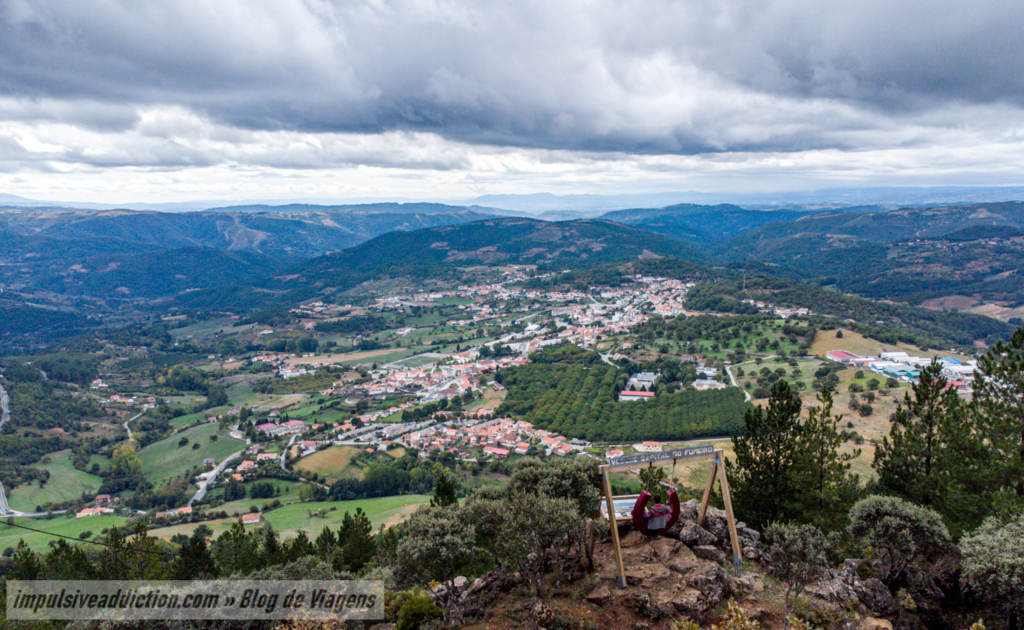
2nd Stage | Montesinho Natural Park Itinerary
The second stage of this route should be done in its entirety on the same day as the previous points. If you think you don’t have time, opt for some of these places, with priority given to Pinheiro Novo and Casares.
You’ll already be exploring Montesinho Natural Park, in the municipality of Vinhais. Here, the villages are less touristy than those in Bragança, generally in a poorer state of conservation, but they are also very beautiful.
I’m not going to recommend specific places in the villages. My recommendation is that you park the car and take a quick walk around each one, setting off to discover it. The villages are very compact and the best thing about them is the people and what they will be doing.
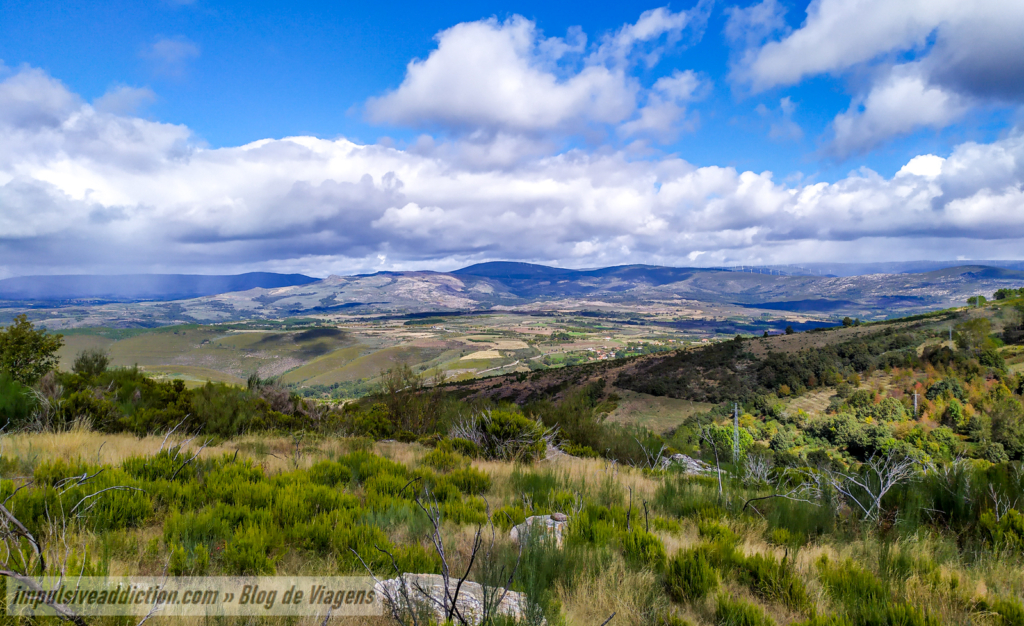
1. Vinhais » Vilarinho de Lomba » Cisterna » Pinheiro Novo
From Vinhais, or in this case, Vinhais Biological Park, head to Vilarinho da Lomba, where you’ll make your first stop. Along the way you may pass through other Montesinho villages, such as Vilar Seco da Lomba, Gestosa, Passos da Lomba, Edroso and Quirás. I’ve visited all of them, but I don’t consider them mandatory, so you can leave them for another trip.
As far as Vilarinho da Lomba and Cisterna are concerned, what stands out most about them are the viewpoints you’ll see to them before your your arrival in the village. The landscape is superb.
Pinheiro Novo is one of the best villages in Montesinho Natural Park, in Vinhais. It is well preserved and has some beautiful corners. This is the must-see village in this group, which requires a longer stop. Before reaching Pinheiro Novo, the bridge over River Rabaçal and the community mills, which have recently been taken care of, are worth a visit.
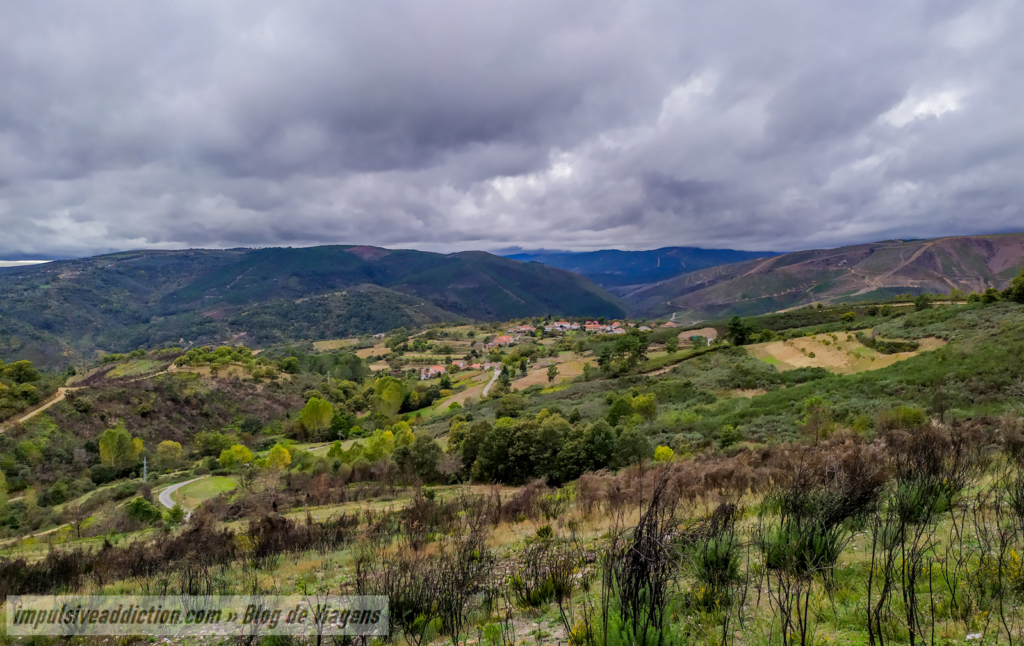
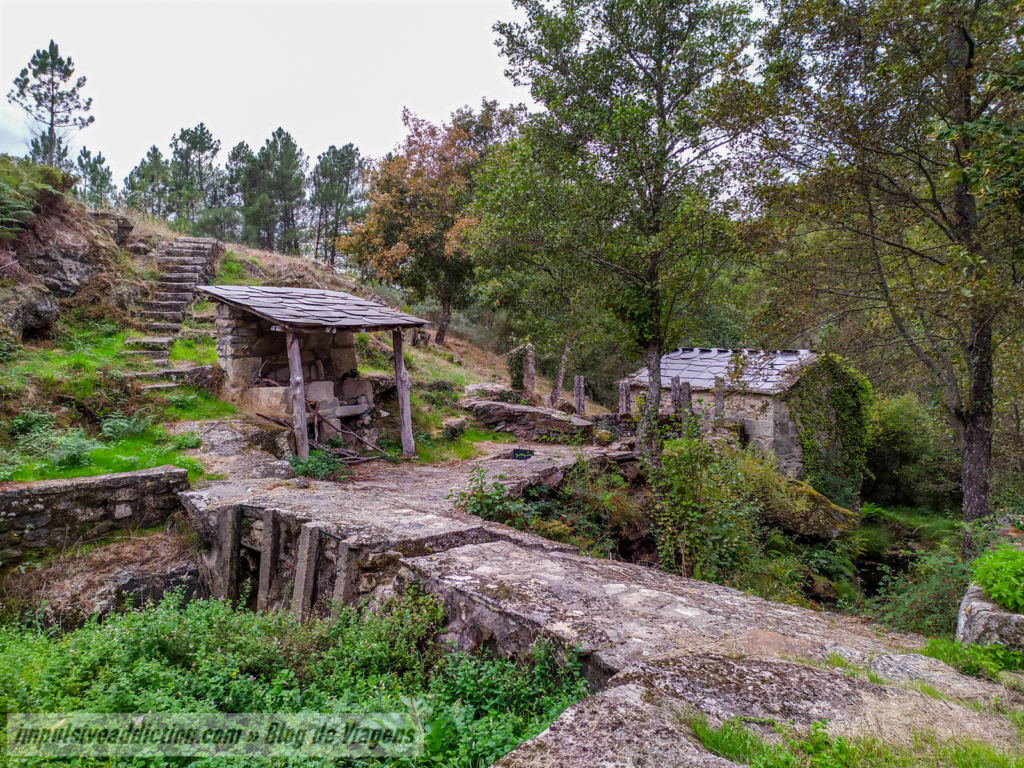
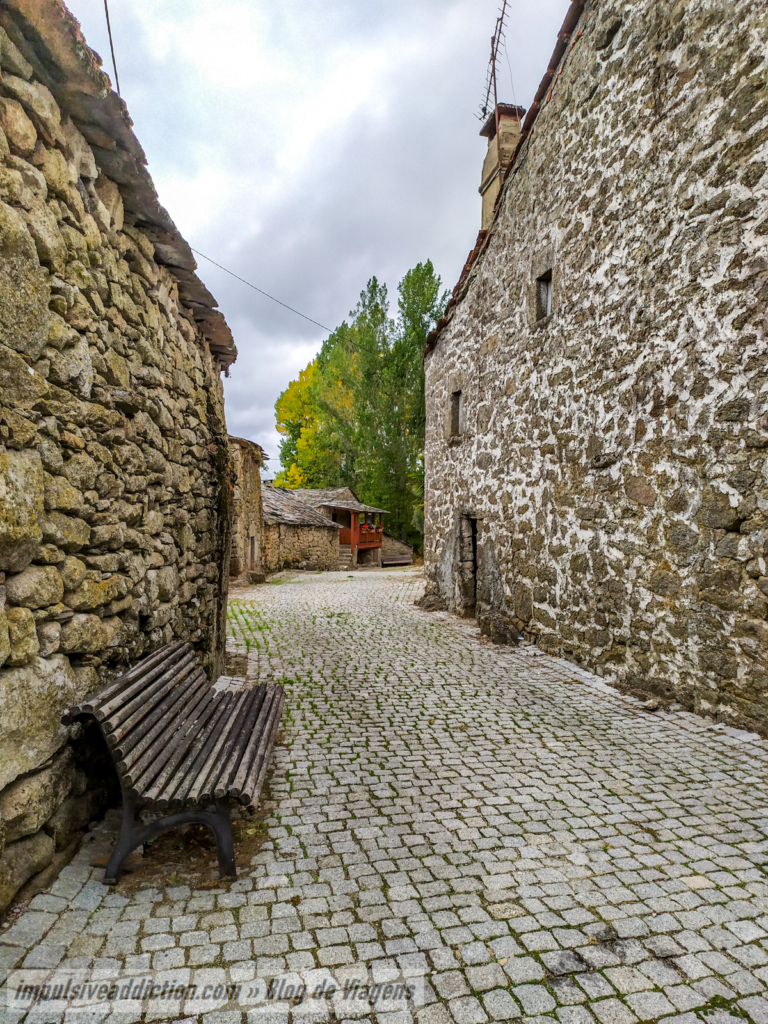
2. Pinheiro Novo » Sernande » Cerdedo » Casares » Carvalhas
From Pinheiro Novo, you can continue on to Sernande. In Sernande you’ll have a beautiful view of Vilarinho da Lomba and the surrounding mountains. It’s very compact, with only one main street to visit, but it’s very picturesque.
To get to Cerdedo you’ll have to pass through a few other optional villages. These are Pinheiro Velho, Contim and Vilarinho das Touças. I also visited Santalha, Penso, Nuzedo de Cima and Tuizelo, a short detour from the route I’m suggesting. Stopping there isn’t mandatory, as they don’t come close in beauty to the others I mention in this section.
In addition to Sernande and Cerdedo, you should stop in Casares and Carvalhas. For me, the best is Casares, where I recommend a longer stop, just as I did for Pinheiro Novo. It was also somewhere on this road between Vilarinho das Touças and Carvalhas that I almost ran over a small roe deer. Fortunately it didn’t happen, and the damn animal ran away from me into the forest before I could film or photograph it.
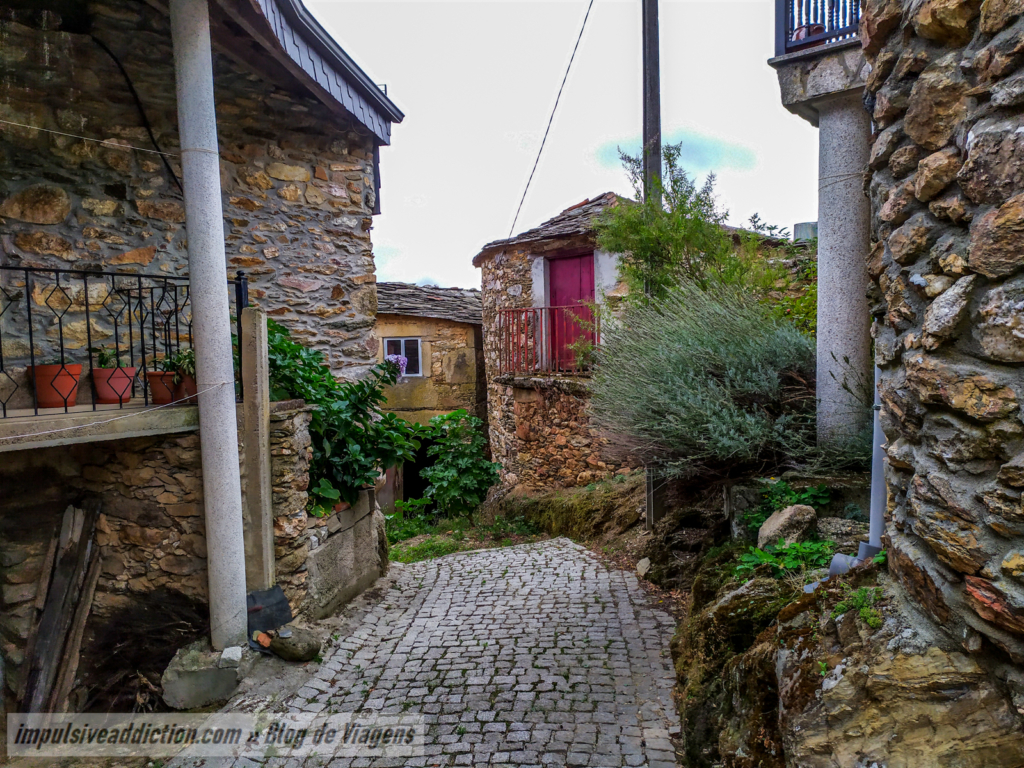
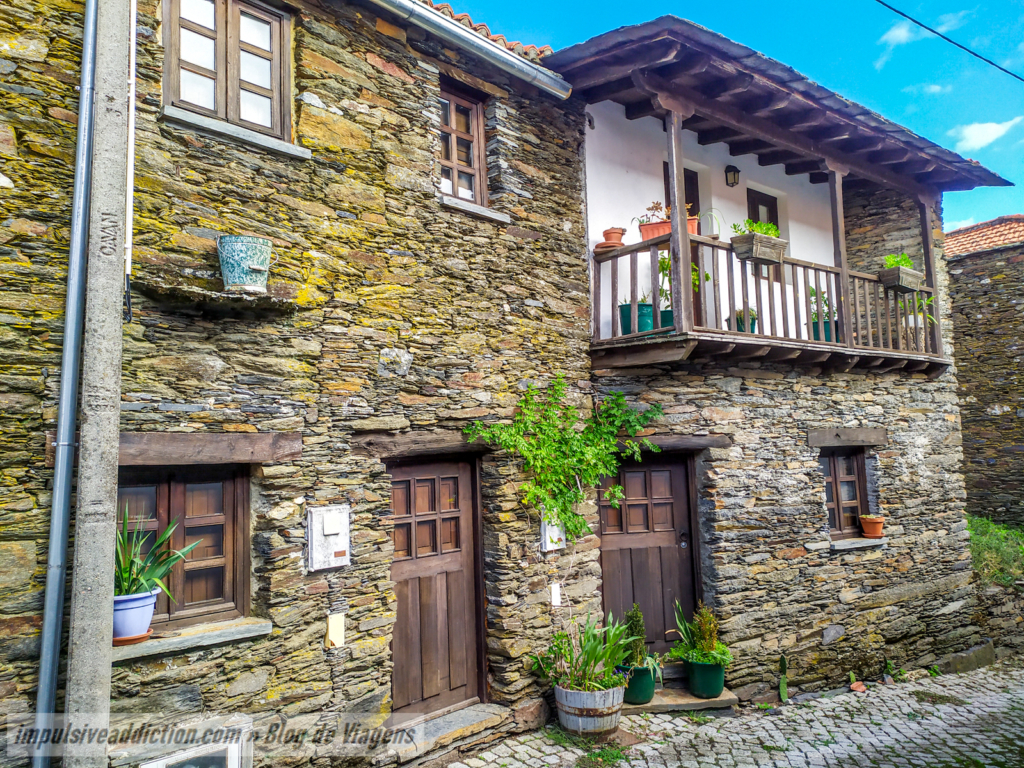
3rd Stage | Montesinho Natural Park Itinerary
This 3rd stage is already for your 2nd day on the region. You’ll visit Moimenta da Raia, the main village of Montesinho Natural Park in Vinhais, and Lorga de Dine, a cave that was occupied by humans in prehistoric times.
1. Lagarelhos » Quadra » Montouto » Moimenta da Raia
In Lagarelhos you will find one of the oldest chestnut trees in Montesinho Natural Park, more than 1000 years old. Its trunk is huge, my God! 😐
In Quadra, on the other hand, I had the opportunity to get close to a gigantic flock of sheep, which was the most outstanding feature of the village. From Quadra to Montouto the landscape is extraordinary, as far as the eye can see! I really liked the village of Montouto, almost devoid of inhabitants but with lots of animals. Just after Montouto you have an excellent viewpoint over Moimenta da Raia.
There are lots of places to visit in Moimenta, as it is the largest and main village of Montesinho Natural Park in Vinhais. One that stands out is the café, Taberna da Ribeira d’Anta, where I stopped to admire the decorations associated with hunting. Curiously, it was hunting season and the place was full of hunters, as I visited Moimenta at the end of the day when they were returning from the hunt. It was interesting to hear some of their stories.
Don’t forget to set off to discover Moimenta’s mills, the Mother Church of São Pedro, and once you’ve had your fill, don’t forget to visit the 360º viewpoint on the outskirts of the village. There are clear signs for it.
As optional villages on this stage to Moimenta, you could also stop in Rio de Fornos, Zido, Vilar de Ossos, Salgueiros and Landedo. In Vilar de Ossos, for example, next to the parish church, I found a beautiful manor house and lots of walnut trees. Needless to say, I stopped there to eat the first walnuts of the year. 😉 But don’t waste your time with these places, unless you have more than 4 days to travel!
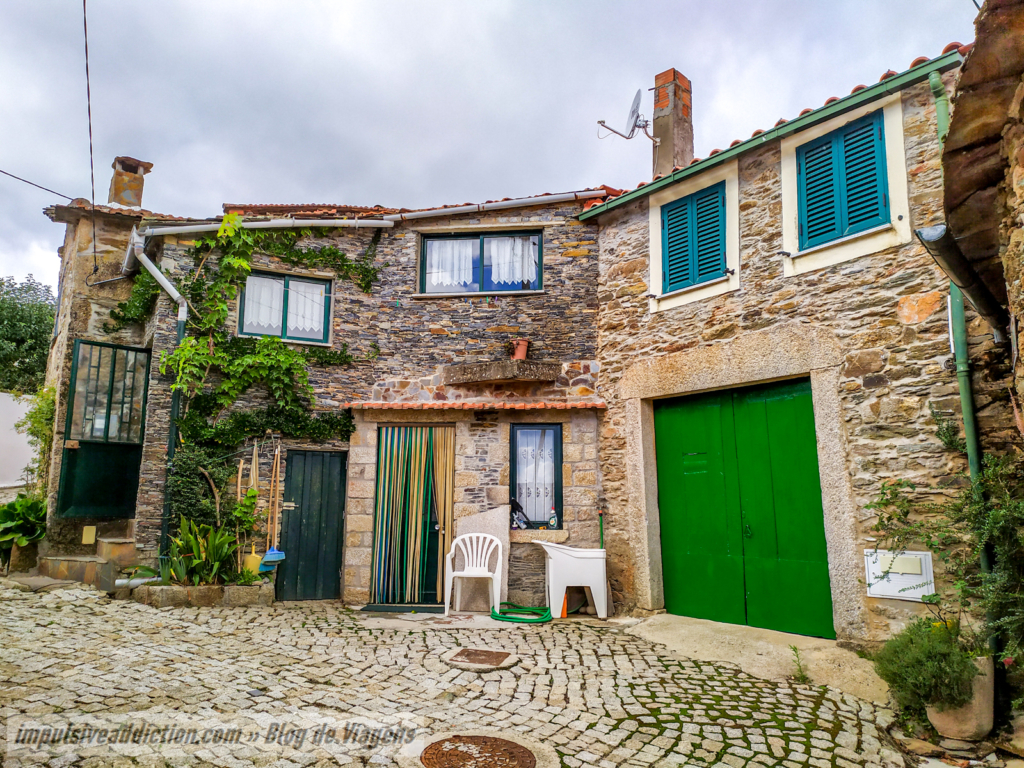
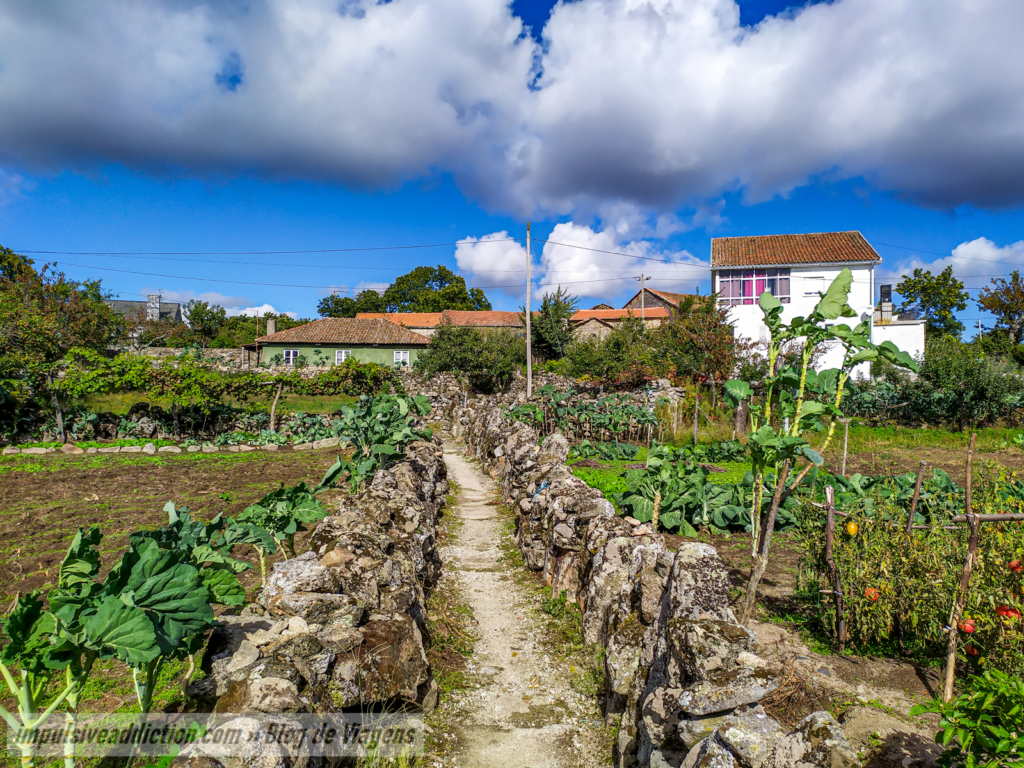
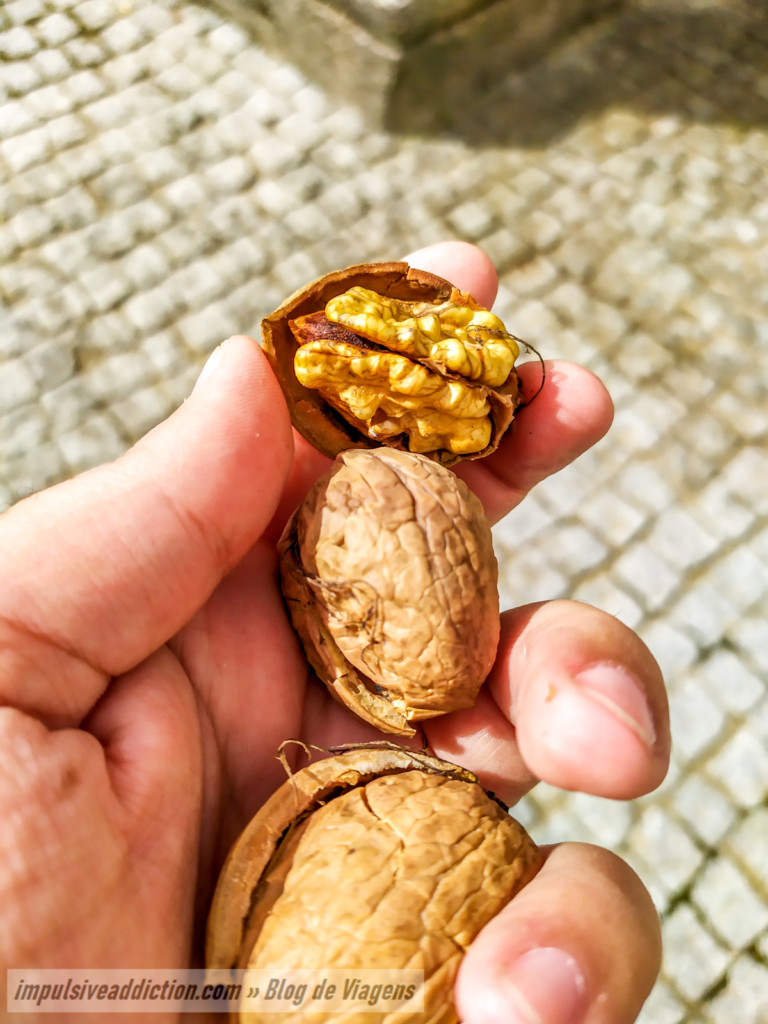
2. Moimenta da Raia » Dine » Fresulfe » Soeira » Quintela
On the way to Dine, the Couço Bridge over River Tuela stands out, as do the immense fields of chestnut trees on either side of the road near the optional village of Mofreita.
The village of Dine is very simple, but it was one of my favorites, perhaps the main one in Vinhais after Moimenta da Raia. Here you have to meet Dona Judite, who lives at the top of the village next to the church and Interpretation Center dedicated to Lorga de Dine. She’s an incredible lady, extremely friendly and with unparalleled energy. She’s the one who can open the doors to the museum and church, as she lives right next to them, and she’ll give you a free guided tour. She loves welcoming visitors! Strike up a conversation! 😀 (Edit: well, I’m not sure if she speaks in English, you will have to figure this out by yourself.)
Lorga de Dine is located a short walk from the interpretation center. It is enclosed with a fence and padlock, and in the past Dona Judite herself used to give guided tours to those interested! Nowadays she doesn’t do it for health reasons, but if you take some equipment (a flashlight is a must!) and talk to her, she might give you the key to visit.
After Dine, the river beach at Fresulfe stands out more than the village itself. On the outskirts of Soeira I came across two gigantic flocks, one of which I knew had around 350 sheep, all of the churra breed! There is also a river beach in Soeira.
Finally, there’s Quintela, where you’ll find another of the main trees in Montesinho Natural Park, this time a Centenary Walnut with a circumference of over 7 meters! Whoops! 😐 I also visited Paçó, Santa Cruz and Travanca, which I consider optional!
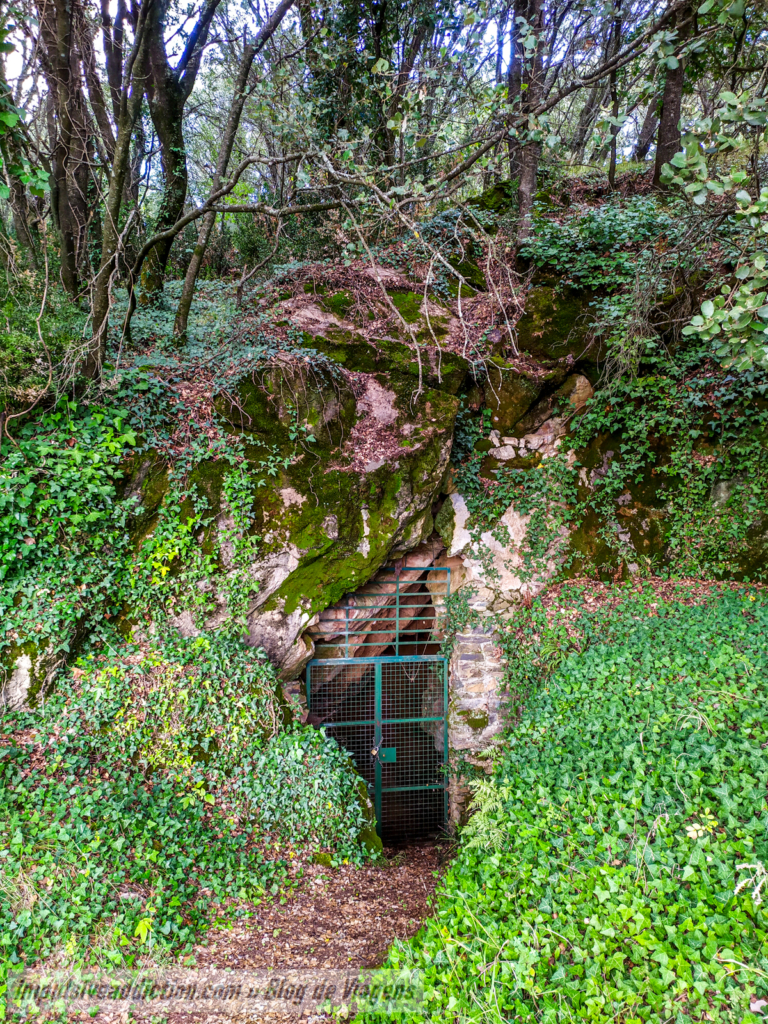
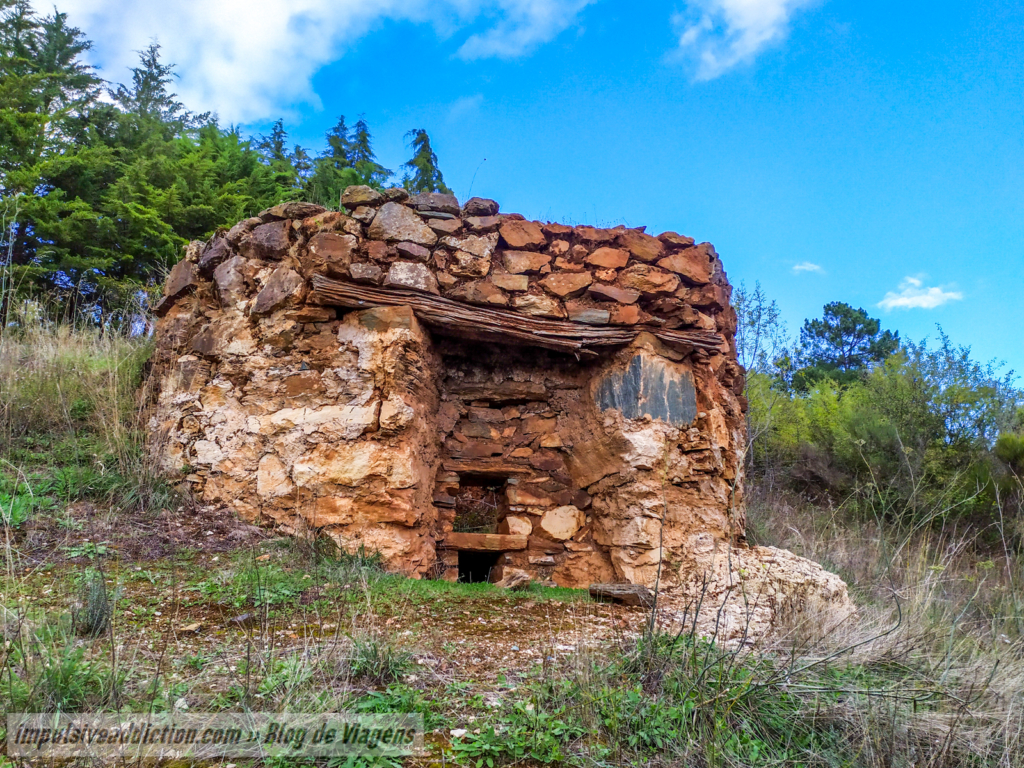
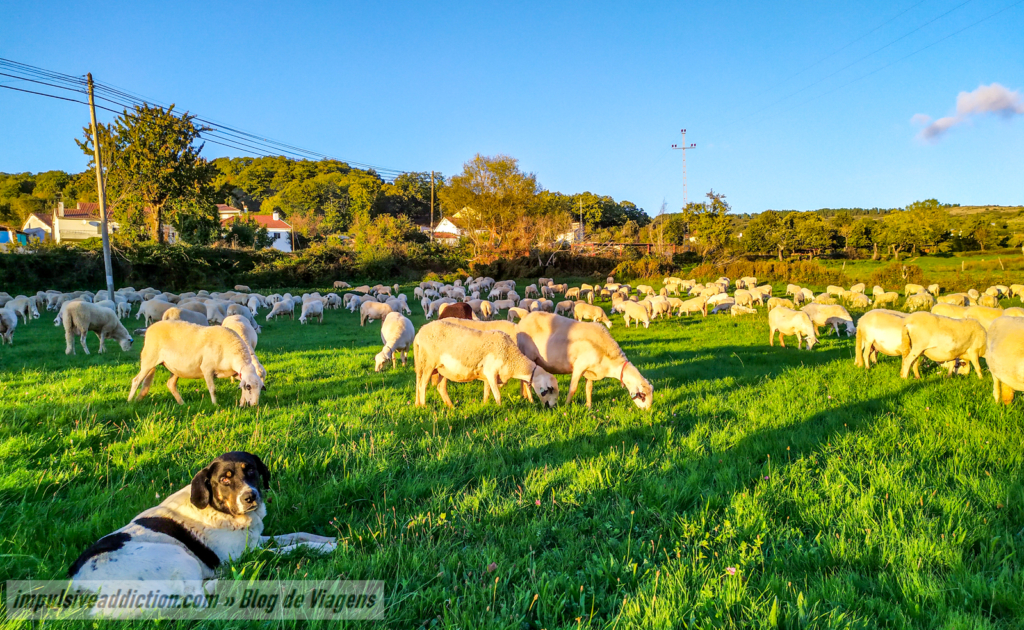
4th Stage | Montesinho Natural Park Itinerary
The 4th stage of this Montesinho Natural Park itinerary is to be done on the 3rd day of the trip. You’ll start with the historic center of Bragança and surrounding area, then head towards Montesinho. On this day you’ll reach the highest part of the mountain range.
1. Historic Center of Bragança
Bragança’s historic center is much larger than Vinhais’, but you can get around it on foot, also. I needed about 5 to 6 hours to visit it all, having been to almost all the museums. If you have a whole day for the city of Bragança, all the better. In fact, for the 4th, 5th and 6th stages I recommend 2 days, but the ideal would be 3 days.
Don’t forget to visit:
- The Citadel of Bragança Castle, where I recommend you start your day. Inside you should take a stroll along the castle walls, which you can see from the air are shaped like a heart. You should also visit the Iberian Mask and Costume Museum, the Church of Santa Maria, the Domus Municipalis, the Pillory, the Keep and Bragança Military Museum.
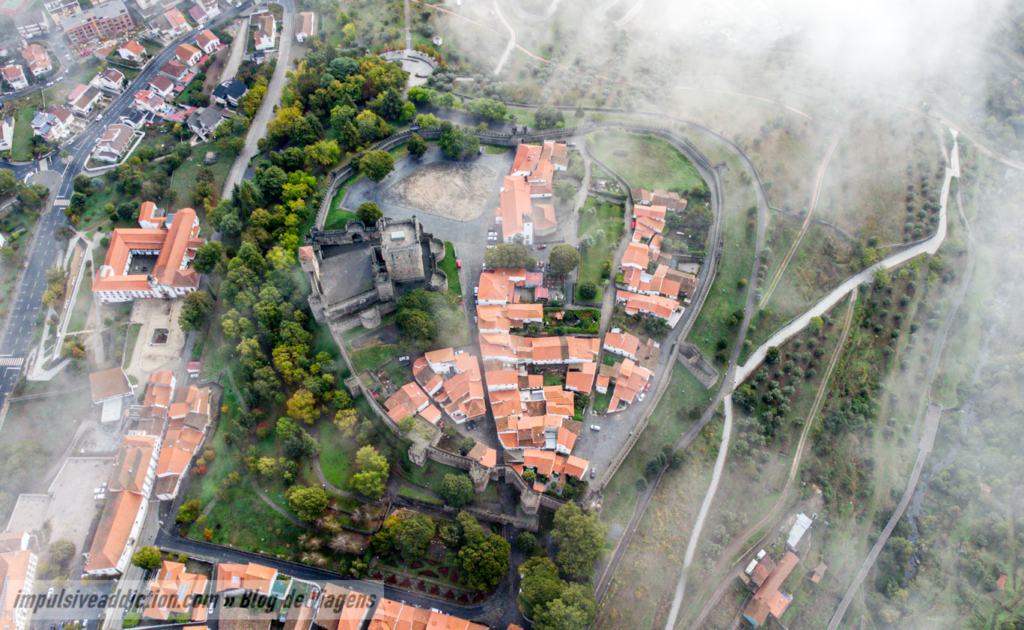
- On your way back to the city center, you’ll come across a street full of museums, Rua Abílio Beça. You can visit Abade de Baçal Museum, Bragança Sephardic Memorial and Documentation Center, the Sephardic Culture Interpretation Center and the Museum of Contemporary Art.
- In the surrounding area, don’t forget Bragança’s main churches, namely the old Cathedral of Bragança, also known as church of São João Baptista, the Church of Misericórdia and the Sanctuary of Nossa Senhora das Graças.
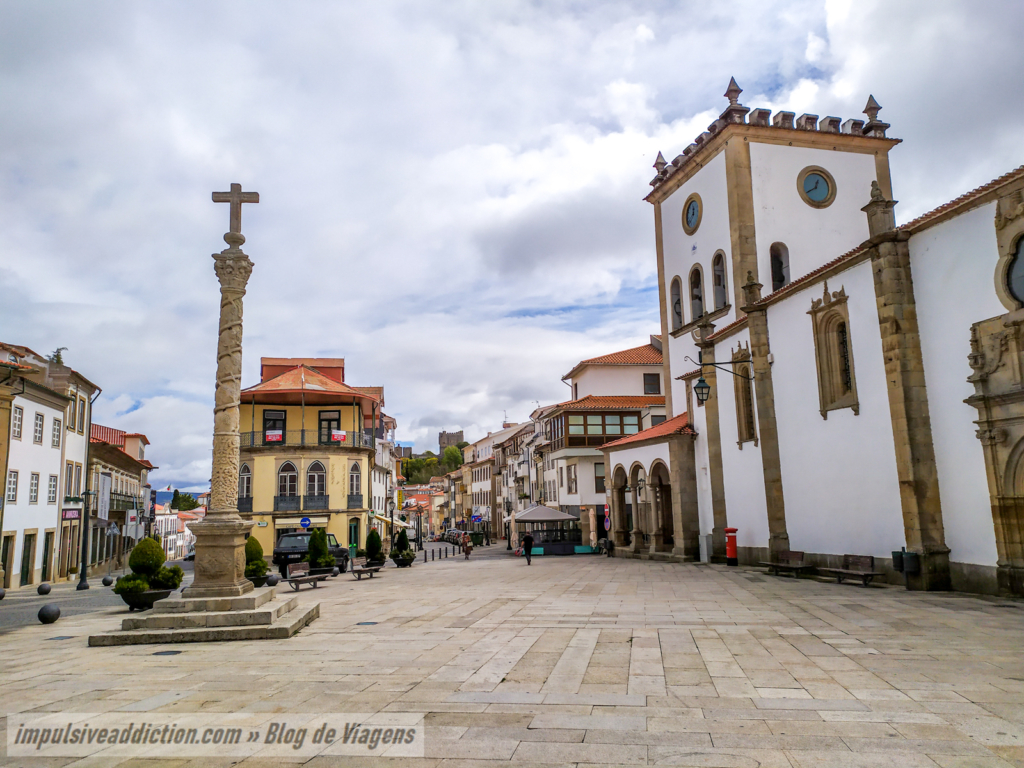
- Praça de Camões is the largest square in the city, home to the Municipal Library.
- Next to River Fervença, you have to walk along the green corridor, with steps on wooden walkways. Don’t forget to visit Bragança Science Center, the Silk Museum and Fervença Urban Park and Polis Zone.
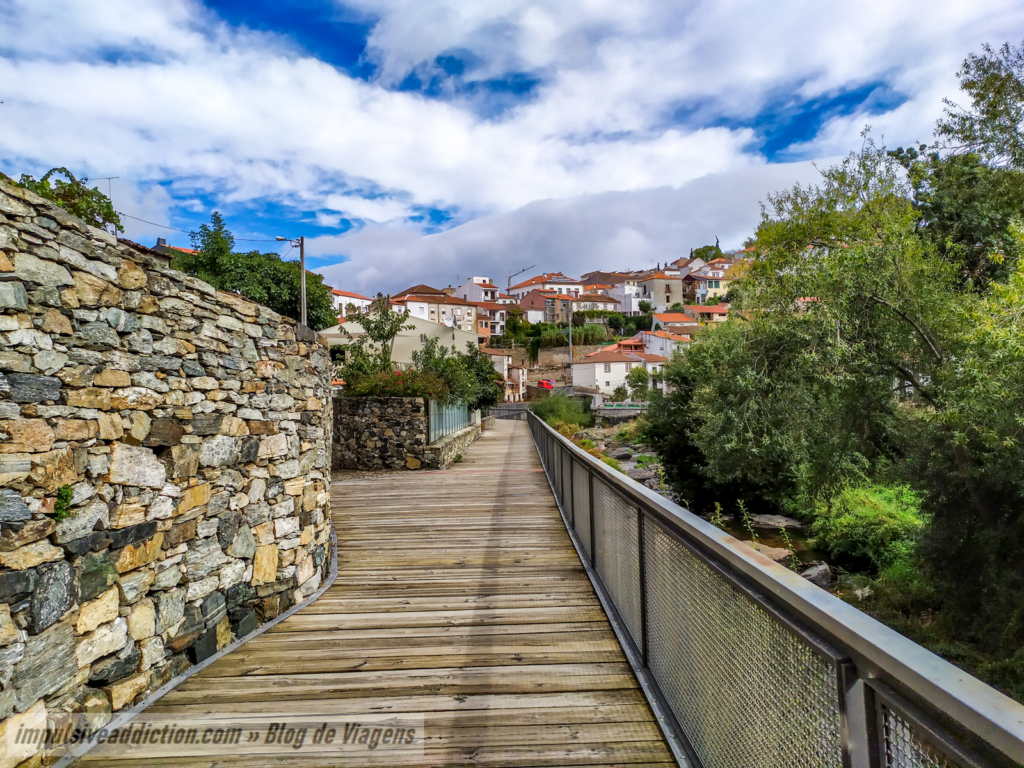
- Finally, I’d also like to highlight the garden on Avenida João da Cruz, with a beautiful fountain that lights up at night. Don’t forget Bordallo II urban art (the chameleon, the ginette and the wild boar), and the railway museum located next to Bragança’s old train station. This was my favorite museum in the city, and did you know that Bragança stopped having a train in 1992?
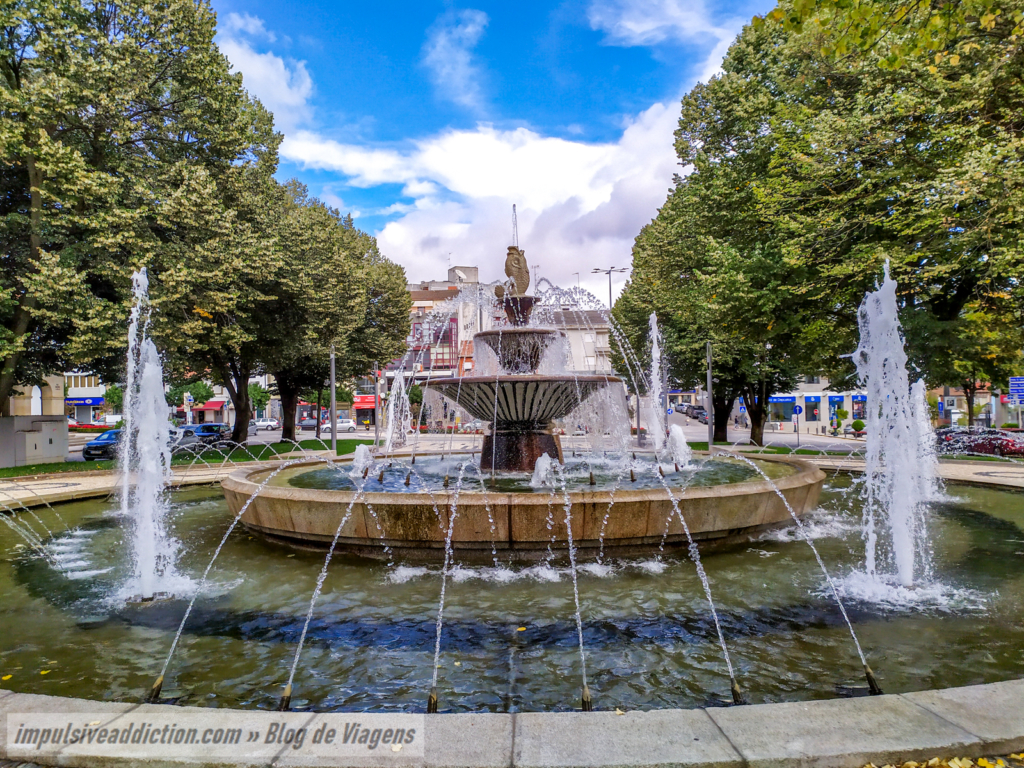
2. Bragança City Surroundings
On the outskirts of the city, you have to give priority to the viewpoints. The best is clearly the Viewpoint of São Bartolomeu, from where you can see the whole city of Bragança, including the Castle in the distance. It’s amazing! On the way there, you’ll pass two other viewpoints that give you a closer view of the castle and citadel, which is why they’re called the Citadel and Castle Viewpoints. I’ve marked the three viewpoints on the map in this article.
Then there’s the New Cathedral of Bragança and S. João de Deus Fort Memorial Center, both optional, in my opinion.
Also optional is Castro de Avelãs Monastery. It’s just a small set of ruins that you can pass by if you have enough time to spare.
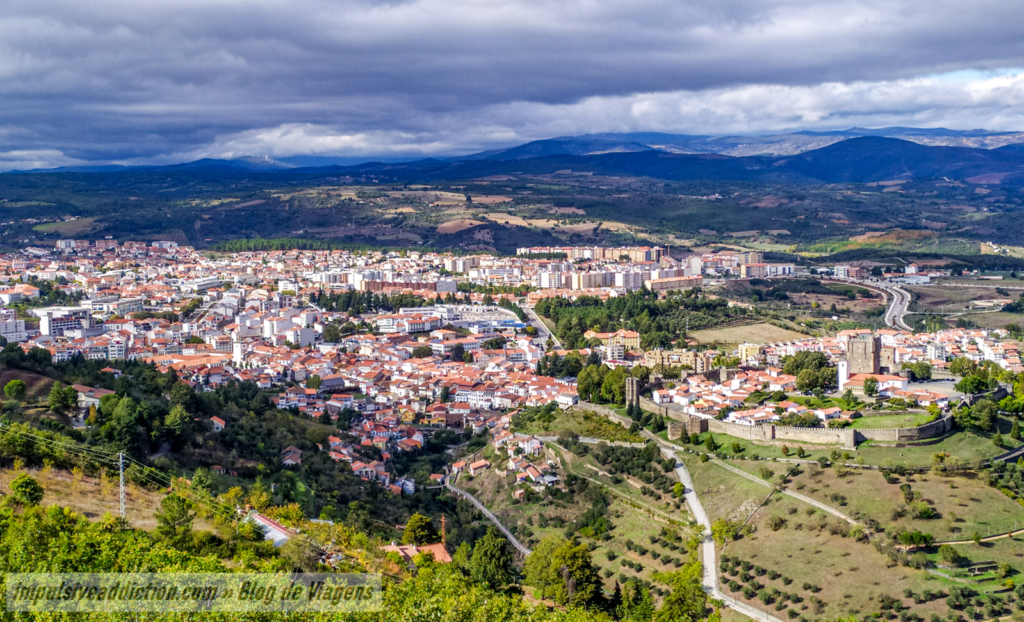
5th Stage | Montesinho Natural Park Itinerary
On the 5th stage of this itinerary, you’ll re-enter Montesinho Natural Park to discover its villages and landscapes. It’s in the Bragança region that Montesinho has the most touristy and best-preserved villages, so it’s probably the area you’ll prefer the most of the whole route.
1. Gondesende » Espinhosela » Terroso » Vilarinho
From Gondesende to Vilarinho, the highlight is these two villages. Both are very picturesque with beautiful corners to discover. Vilarinho stands out in the park for having the headquarters of Apimonte, where you can buy honey produced from the hives of the natural park. As a curiosity, Apimonte honey won several medals already due to its quality.
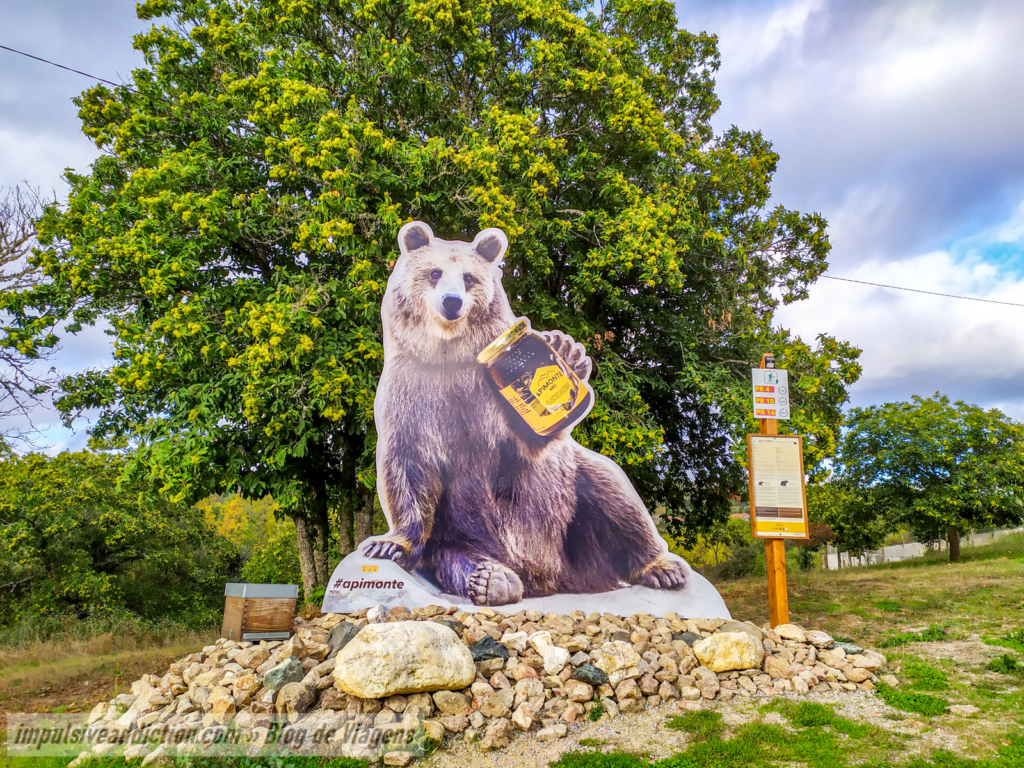
As far as Espinhosela and Terroso are concerned, the former I visited very fast (although I thought it was nice for a quick stop). The second made me stay longer, as I took a huge detour of a few kilometers to the mills on the Baceiro River. Next to the mills you’ll find a huge green field where a flock of sheep often graze. Very pretty!
Optionally, you can also stop in Parâmio.
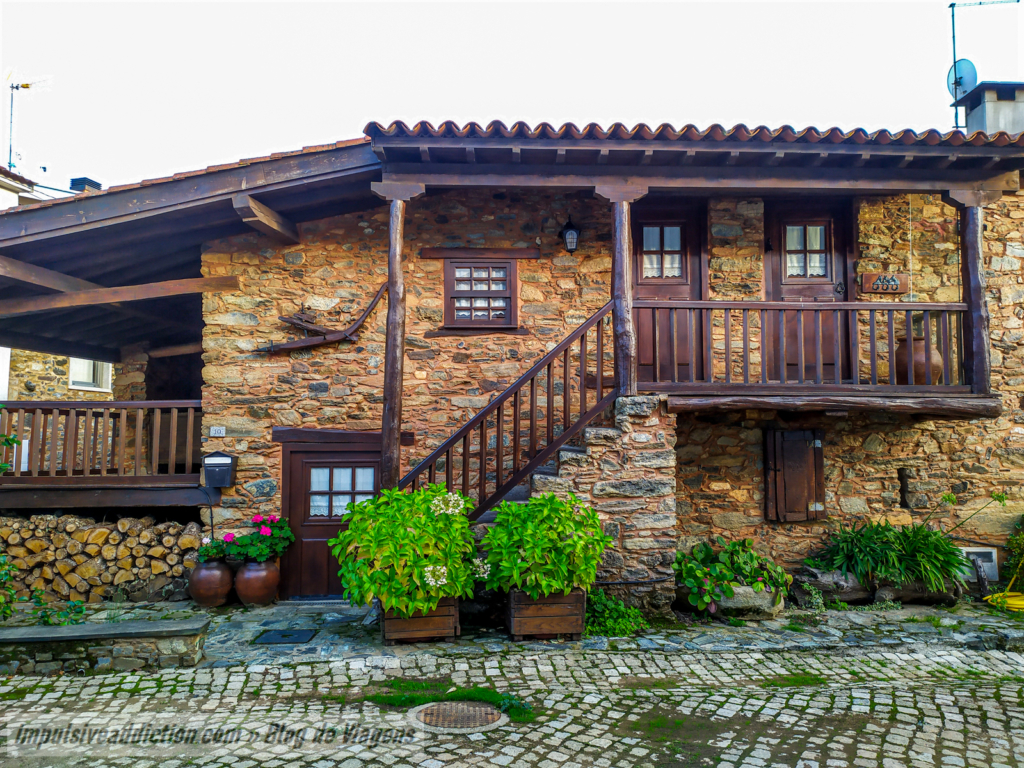
2. Vilarinho » Cova da Lua » Casa da Lama Grande » Montesinho
On this stage you’ll be driving on a dirt road, but it’s on this road that you’ll have access to the best views of Montesinho Natural Park. And it’s quite doable by car, unless recent rains have damaged it!
Access to this road is from Cova da Lua. But before that, on the outskirts of the village, I found the spectacular picnic site of Nossa Senhora da Hera.
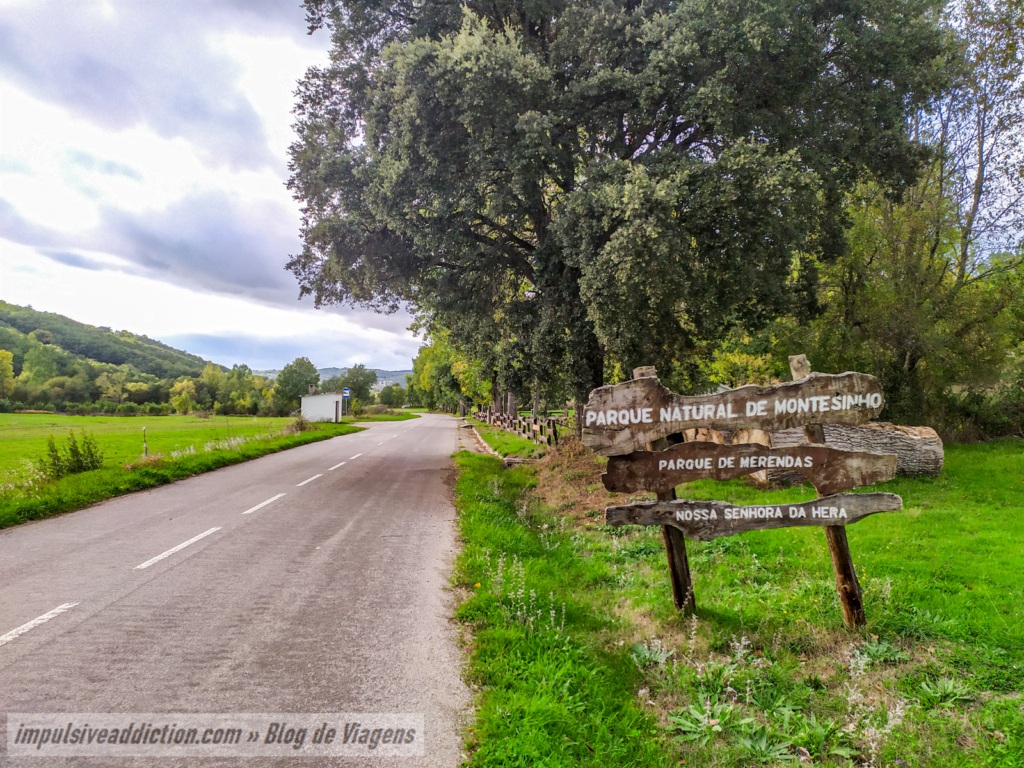
On the dirt road, you pass the Veiguinhas dam first, on River Sabor, and then Casa da Lama Grande. Finally, you descend to Serra Serrada dam and only after you reach the village of Montesinho. Casa da Lama Grande is a phenomenal place: it’s an abandoned location at the top of the mountain, which when I visited was full of cows everywhere. It was like a “Montesinho Cow Sanctuary”, to be honest. 😀
The village of Montesinho is for me the most beautiful in the Natural Park. Full of flowers, and well preserved. If you take the dirt road, you’ll have access to incredible viewpoints of the village and its surroundings, before reaching it.
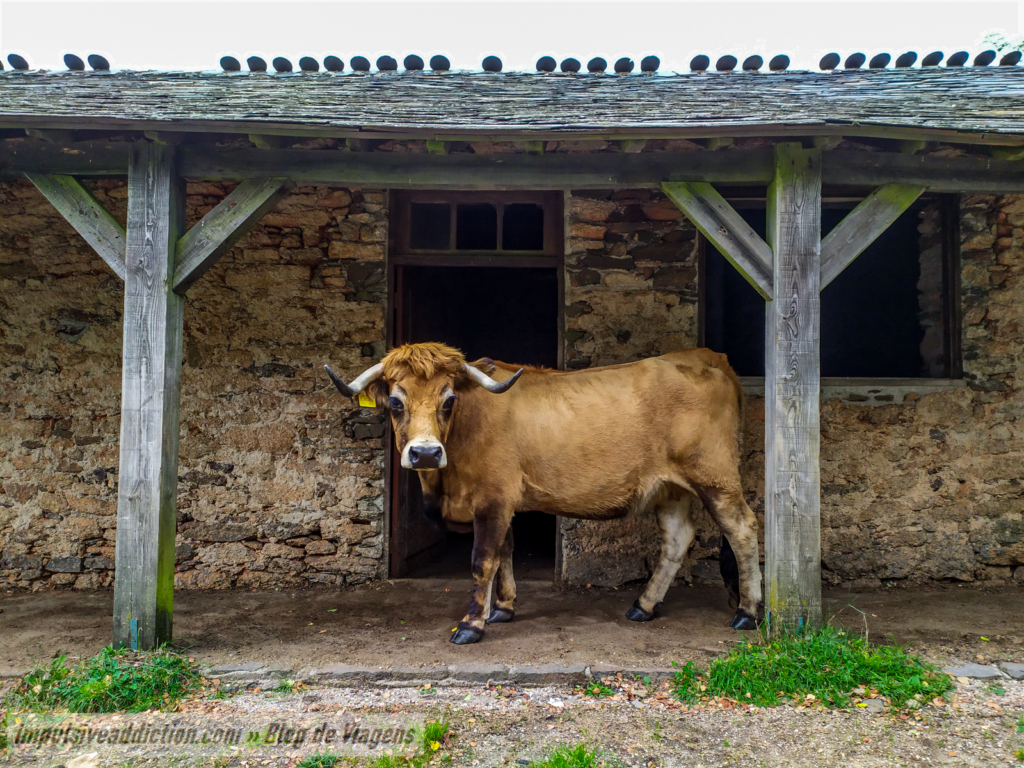
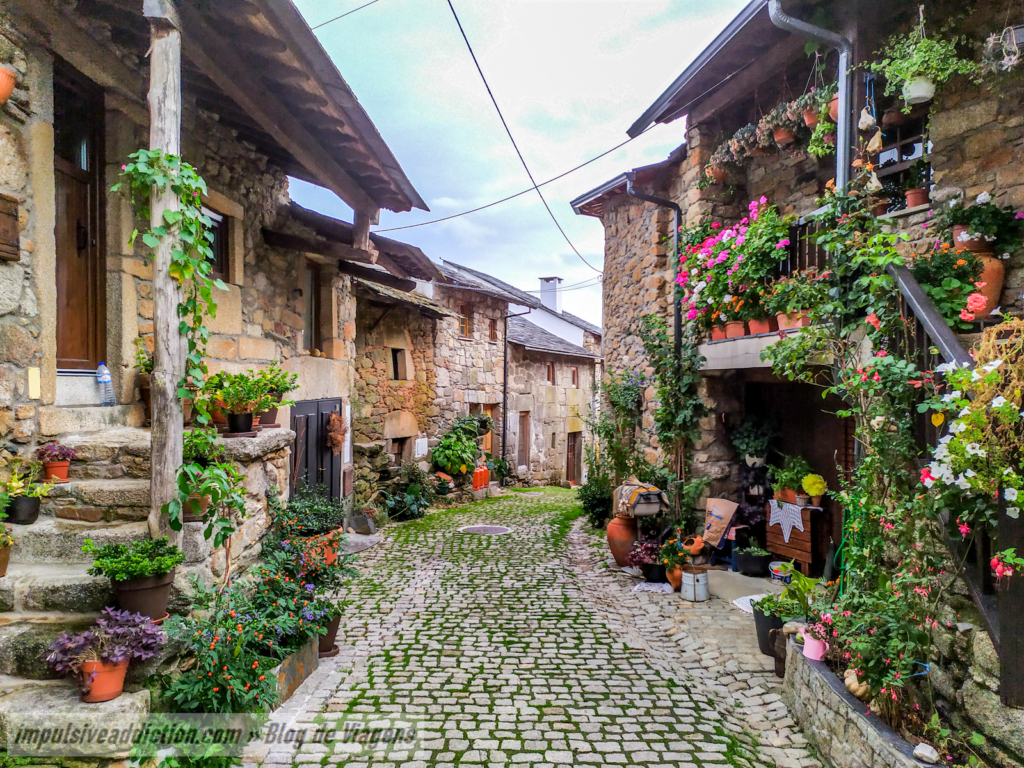
6th Stage | Montesinho Natural Park Itinerary
Stage 6 is recommended for the last day of the trip. I really recommend that your bases are Vinhais and Bragança, or places south in the park, such as Gimonde or Gondesende, from where you can always start exploring the rest of it.
1. Gimonde » França » Aveleda » Varge » Rio de Onor
Start the day in Gimonde, a village where the bridges over River Onor stand out. Cross the river both on the bridges and on the path of alpondras (“stones”) over it. This second option will be fun! 😉
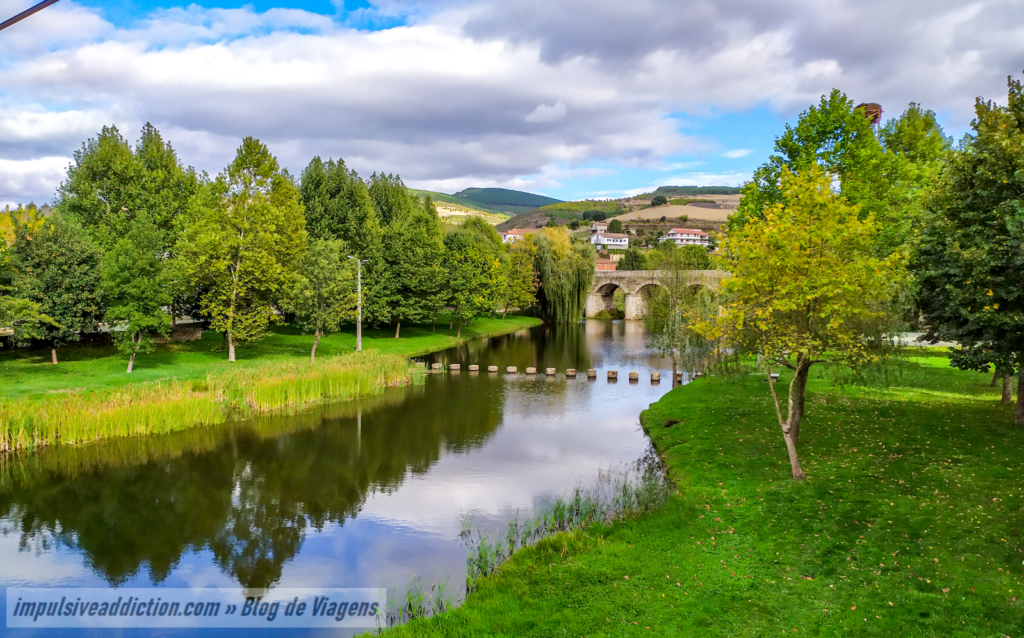
After Gimonde, it’s on to França, which is “France without Paris”, as the friendly inhabitants of the village amusingly told me. França has a small river beach and is worth a short walk to discover its narrow streets.
On the way from Gimonde to França, I could also tell you about Baçal and Rabal, or even Oleirinhos, Meixedo and Carragosa (villages I also visited), but these are all optional.
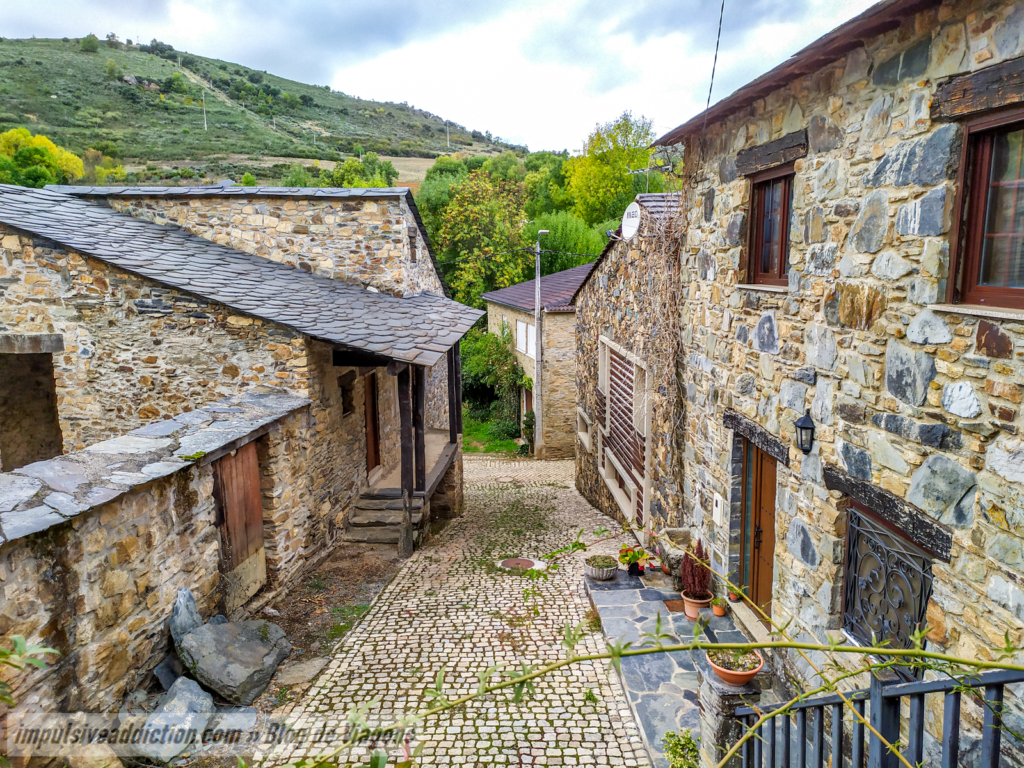
The villages you really don’t want to miss are Aveleda, Varge and Rio de Onor, especially the first and third. All of them are crossed in the middle by a stream/river.
Aveleda (which is in my top three favorite villages in the natural park) has an easy connection to França, and it’s a very pretty route, which I recommend. The Equestrian Center of França stands out somewhere along the way.
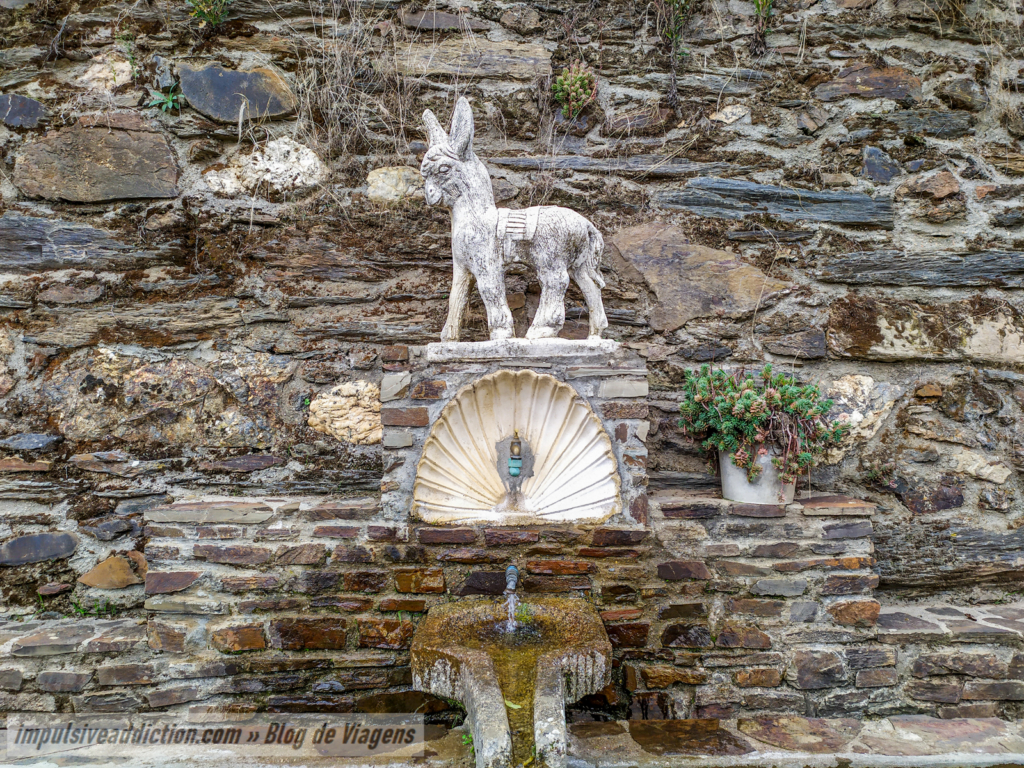
Rio de Onor is a marvel of Portugal and a community village on the border with Spain. Make a point of visiting the Portuguese side (the most beautiful, by the way) and then the Spanish side (Rihonor)! On the Spanish side there’s a waterfall that may have water in the winter months: ask the locals where it is and they’ll be sure to help you. 😉
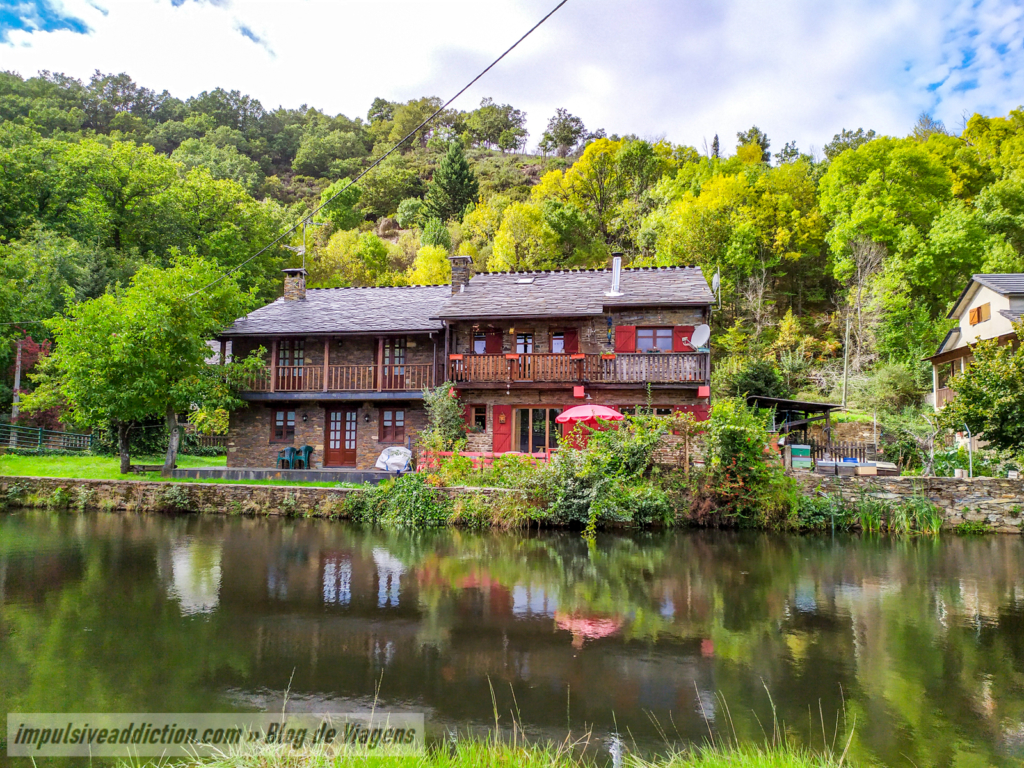
Many visitors to Montesinho Natural Park end up going on to Puebla and Lago de Sanabria. I haven’t done it, nor have I ever visited, so I won’t give you any tips on how to do it. If you want to visit this region of Spain, which looks very beautiful, consider an extra two days, or at least one more.
2. Rio de Onor » Guadramil » Babe » Quintanilha » Outeiro
From Rio de Onor I recommend heading to Guadramil, an old village whose schist roofs amazed me when seen from the top of its church. This village is also in my top 3 of Montesinho Natural Park, and for me it is superior to Rio de Onor, which is not in that top 3, despite being a wonder of Portugal. It is said that it is in the area around Guadramil that it is easiest to spot roe deer and deer in the wild. There is a hiking trail there that you can follow!
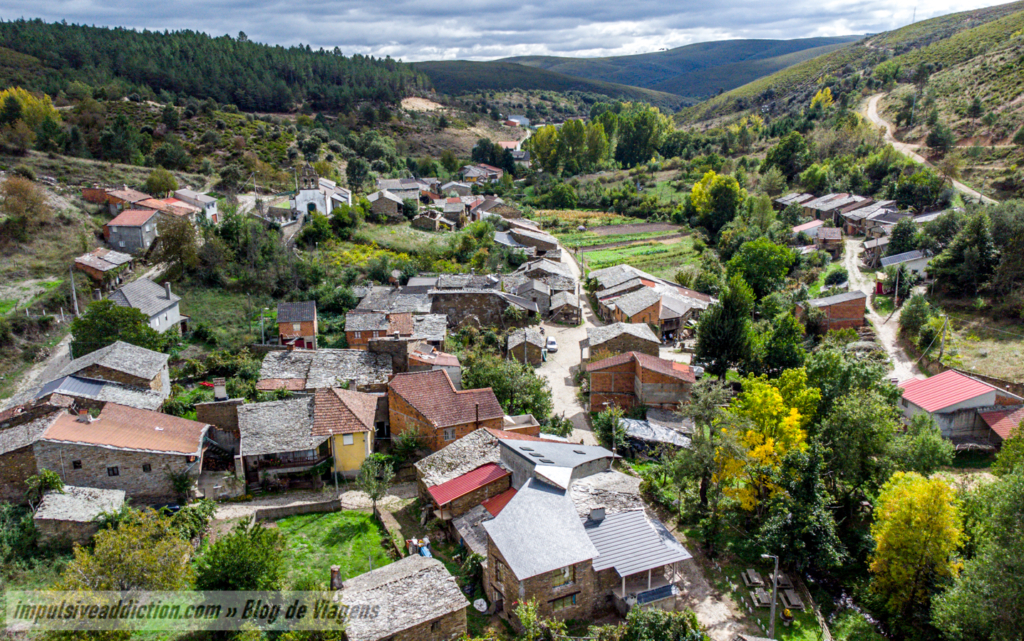
After Guadramil you pass very fast through Deilão, Vila Meã and São Julião de Palácios, all optional stops. I also made a detour to Petisqueira, but I don’t consider it mandatory.
In Babe, Caravela and Palácios I found some beautiful spots, such as around the rural museum in Palácios, or the monument in the center of the main square in Caravela. I recommend that you pass through these villages, even if it’s just by car for a quick look around.
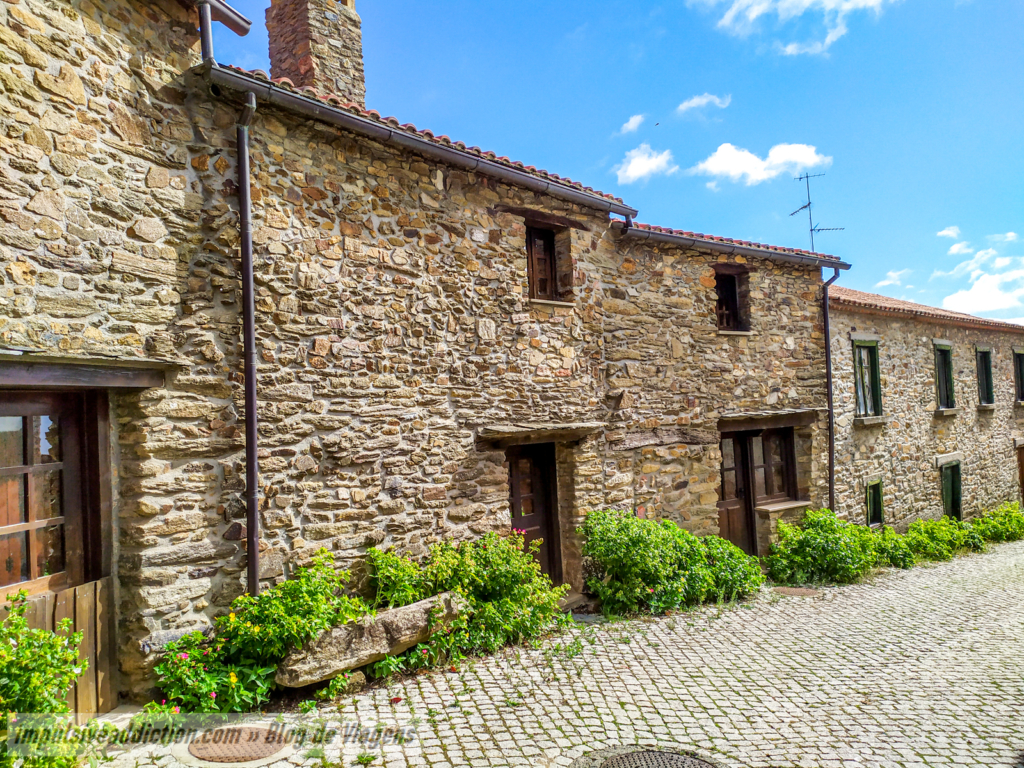
In Quintanilha, the Colado river beach stands out, with a pleasant picnic area by the Maçãs river. I also visited the villages of Veigas and Referga, but consider them optional.
Lastly, comes Outeiro. I almost missed the ruins of Outeiro Castle, from where you’ll have a great viewpoint over the village and a good spot for sunset. In the center of the village, don’t forget the Basilica of Santo Cristo de Outeiro.
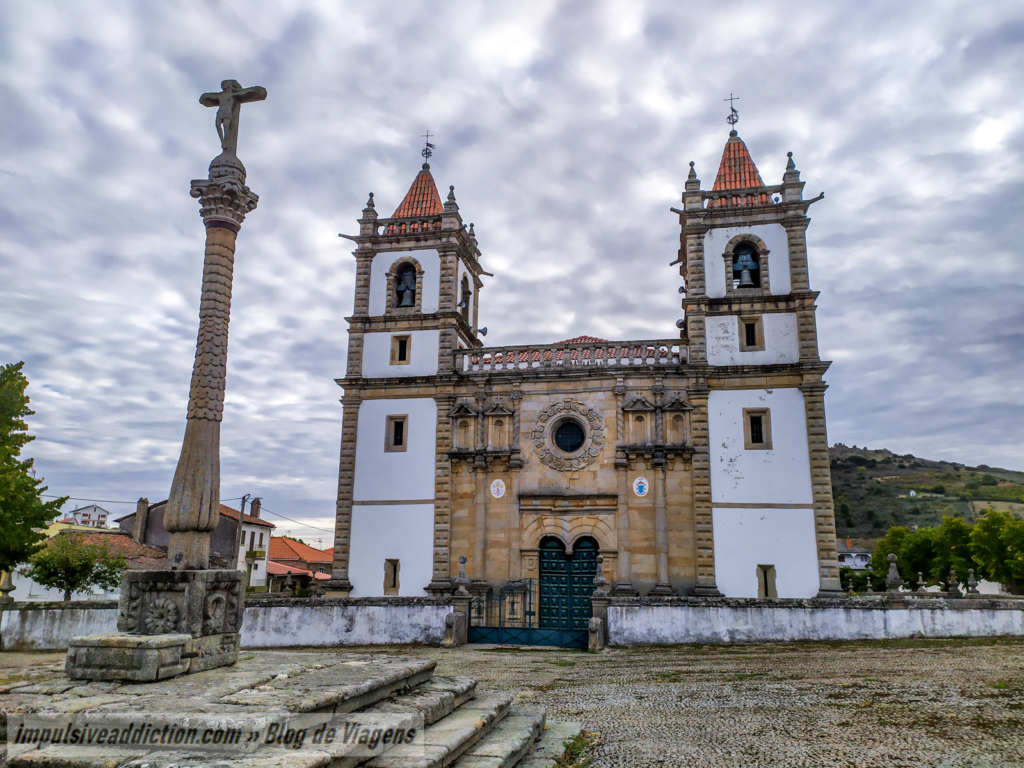
Best Villages to visit in Montesinho Natural Park
My favorite villages are clearly Montesinho, Aveleda and Guadramil. Then there are Gondesende, Moimenta da Raia and Rio de Onor. If you don’t have much time to travel the region, focus on these, but still do the circuit I mentioned, because although you won’t stop in all the villages suggested, you’ll still enjoy the landscape!
Walking Routes and Hikes to do in Montesinho Natural Park
As far as hiking is concerned, I didn’t do any long hikes in Montesinho Natural Park. I just followed an itinerary by car, and that was more than enough for me.
There are, however, several routes and trails available to visitors. You can also pick up leaflets and information about them at the Interpretive Center of Montesinho Natural Park in Vinhais. In fact, I always recommend going to the tourist offices to ask about the condition of the trails before you go, for example, if the trail is clean and prepared for walking on your dates visiting.
Of all the trails I’m going to mention, I’m most curious about doing the Dine trail (PR10) and the Guadramil trail (PR12). If you want to walk a lot during your visit, remember to add more days to your itinerary. What I’ve suggested so far is 4 or 5 days, without trails! With trails, it could be 6 or 7 days.
Biospots Route (Alto da Ciradelha) – Vinhais
It starts at the Biological Park of Vinhais and ends at Alto da Ciradelha. The round trip is about 3km long. I didn’t do the trail, but I did drive to the Biological Park of Vinhais and then to the Chouriça Swing. The vegetation seemed spectacular and super pleasant for a walk.
PR1 + PR2 Colado Trail in Quintanilha (Bragança)
It’s a circular trail of around 14km, starting and finishing in Quintanilha. It has a stage that looks beautiful right next to River Maçãs. It passes by the Colado Picnic Park, which I’ve mentioned throughout this article.
PR3 Porto Furado Trail in Montesinho (Bragança)
It’s a circular trail that takes you from the village of Montesinho to Serra Serrada dam. It’s about 9km in total. I remind you that there is a dirt road that passes by the dam, passable by car!
PR4 Ornal Trail in Vilarinho (Bragança)
It’s a circular trail of around 8km, starting and finishing in the village of Vilarinho. Highlights include the Ornal stream and a stretch of the Baceiro river.
PR5 + PR6 in Vinhais – Ribeira dos Ladrões Trail
It starts in Rio de Fornos or Travanca, whichever you prefer. Officially, it’s Rio de Fornos. It’s a total of almost 12km of trail through the valley of Ribeira dos Ladrões that gave it its name.
PR7 Trail in Moimenta da Raia (Vinhais)
It is about 7 km long and starts in Moimenta da Raia. Along the way, I highlight the Tuela river, the Anta stream and the viewpoints.
PR8 Malara Route in Gimonde (Bragança)
A total of almost 12km from Gimonde, with the highlight being the vegetation that surrounds River Onor in the area.
PR10 Tuela Thermal Baths – Dine (Vinhais)
It starts in Dine. It’s almost 9km, passing through the lime kilns and Lorga de Dine, and then following Quintela Stream and River Tuela, where you’ll find four anthropomorphic baths built into the rock.
No, these baths are not graves! 😉 The friendly Dona Judite I mentioned throughout the article told me that she’s had visitors who thought those baths were graves, but they’re not! The waters of the thermal baths apparently had medicinal properties for treating the skin.
The trail also passes Fresulfe River Beach, which I also mentioned throughout the article. This is one of the trails I’m most curious about doing, not least because I want to go back to Dine to get into the bloody lorga!!! 😉
PR11 Tresmonte Trail (Vinhais)
The Tresmonte Trail starts in Gestosa, one of the optional villages on this itinerary. It is a total of around 9km of circular trail. Highlights include Quinta de Tresmonte, which gave it its name, Covo stream, Queimadas viewpoint and Gestosa Bridge over Rabaçal River.
PR11 Rio de Onor Trail (Bragança)
On this trail, PR11 but on the Bragança side, you’ll walk around Rio de Onor, Portugal’s wonder village. I’d like to highlight the Centenary Oak along the way, and the village itself.
PR12 Deer Route in Guadramil (Bragança)
To finish, PR12 is probably the one I’ll do next time I visit Montesinho Natural Park. At least, it’s the one I’m most curious about. It has to be done early in the morning if you want to be lucky enough to hear the deer roar (during the mating season), as this is an area where deer are more likely to be seen, according to what I was told at the tourist offices.
I don’t think the trail itself is extraordinary, but the chance of seeing footprints and traces of the passage of these animals is clearly an invitation to walk it.
Other Itineraries and Travel Guides in Portugal
- N2 Portugal Road Trip Itinerary
- Madeira Itinerary and Travel Guide
- São Miguel Itinerary and Travel Guide (Azores)
- Terceira Itinerary and Travel Guide (Azores)
- Pico Itinerary in Azores
- Faial Itinerary in Azores
- Minho | Northern Portugal Itinerary
- Porto Itinerary and Travel Guide
- Things to do In Braga (Minho)
- Things to do in Guimarães (Minho)
- Things to do in Viana do Castelo (Minho)
- Peneda Gerês National Park Itinerary
- Douro Valley Itinerary
- Trás-os-Montes Itinerary
- Things to do in Bragança
- Douro International Natural Park Itinerary
- Things to do in Aveiro
- Things to do in Coimbra
- Things to do in Leiria
- Things to do in Fatima
- Things to do in Nazaré
- Things to do in Peniche
- Things to do in Évora (Alentejo)
- Things to do in Beja (Alentejo)
- Algarve Road Trip Itinerary
- Things to do in Lagos (Algarve)
- Things to do in Portimão (Algarve)
- Things to do in Faro (Algarve)
- Things to do in Tavira (Algarve)
I hope you enjoyed this article and itinerary to visit Montesinho Natural Park in the district of Bragança. Have a nice stay in my country! 😉
